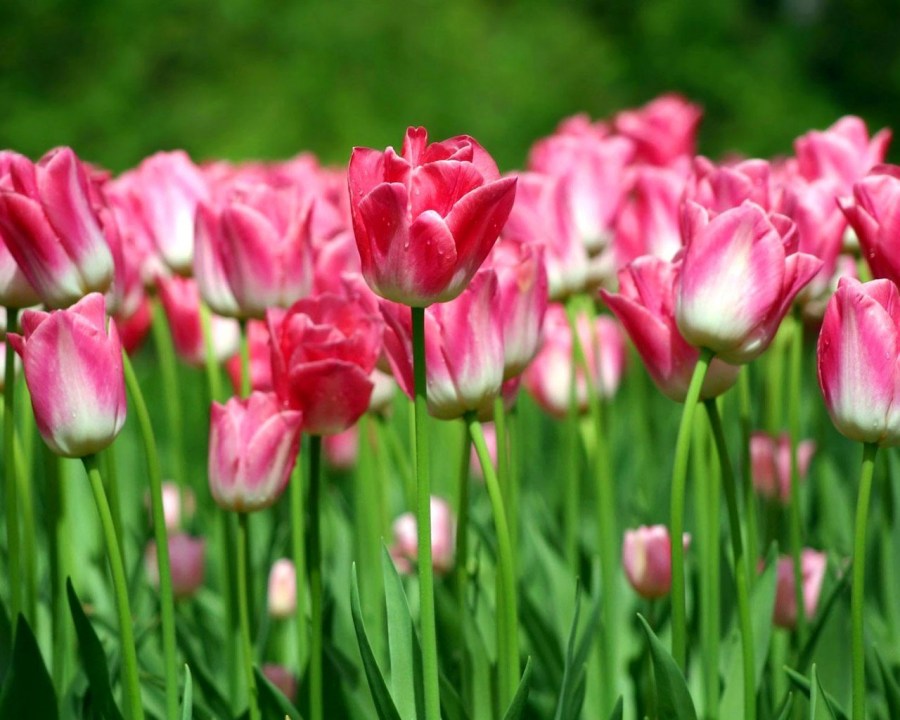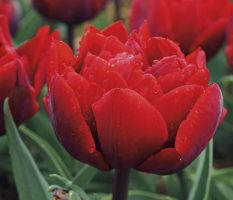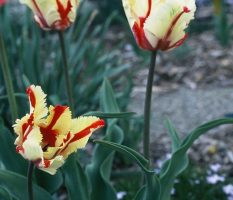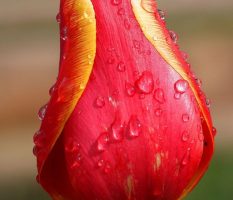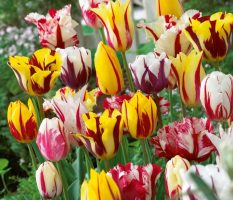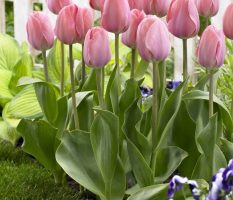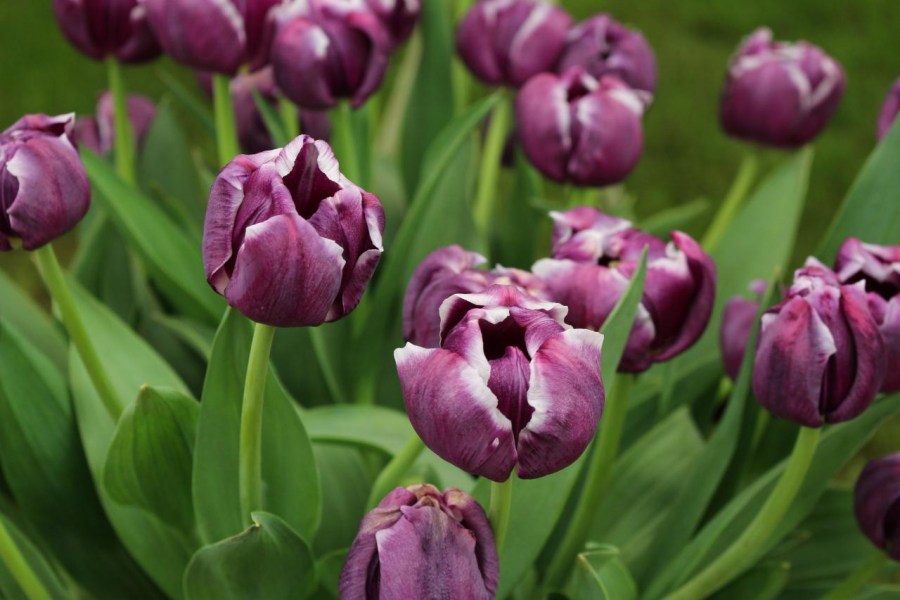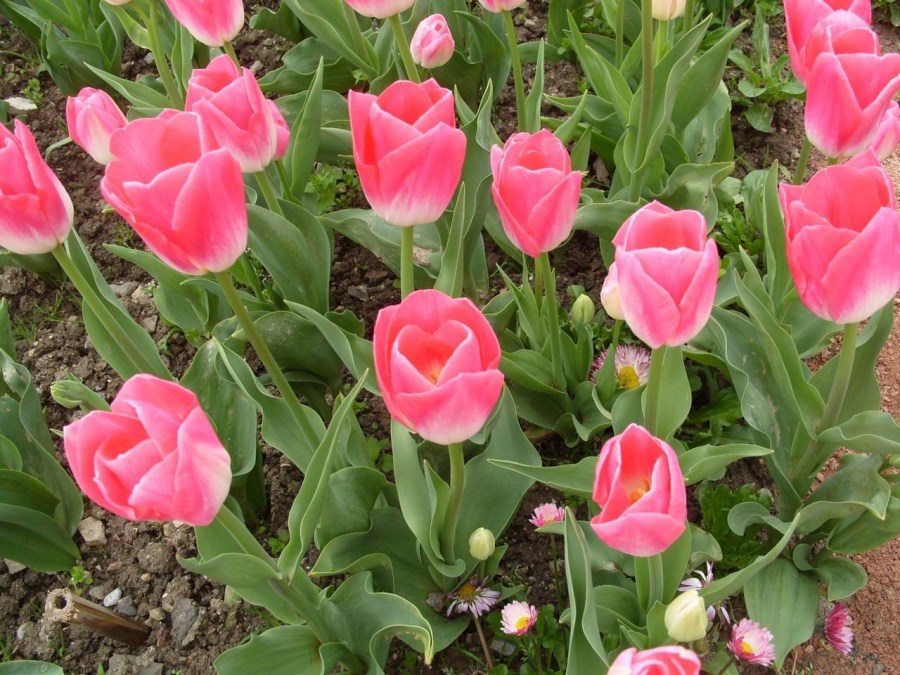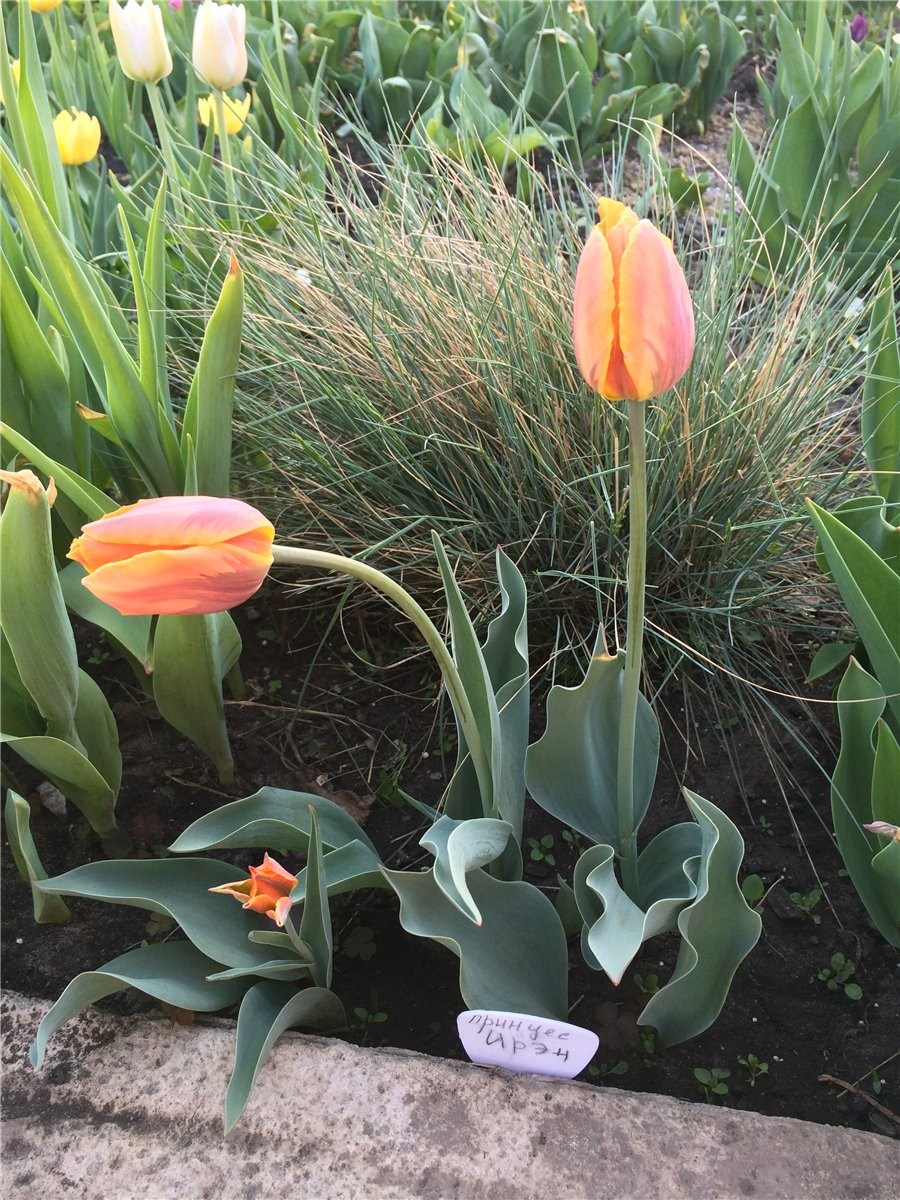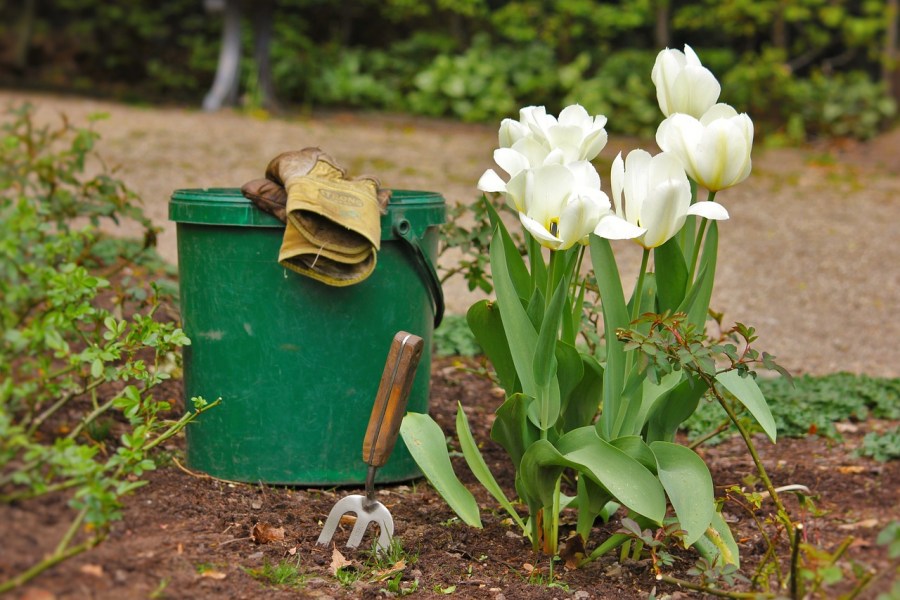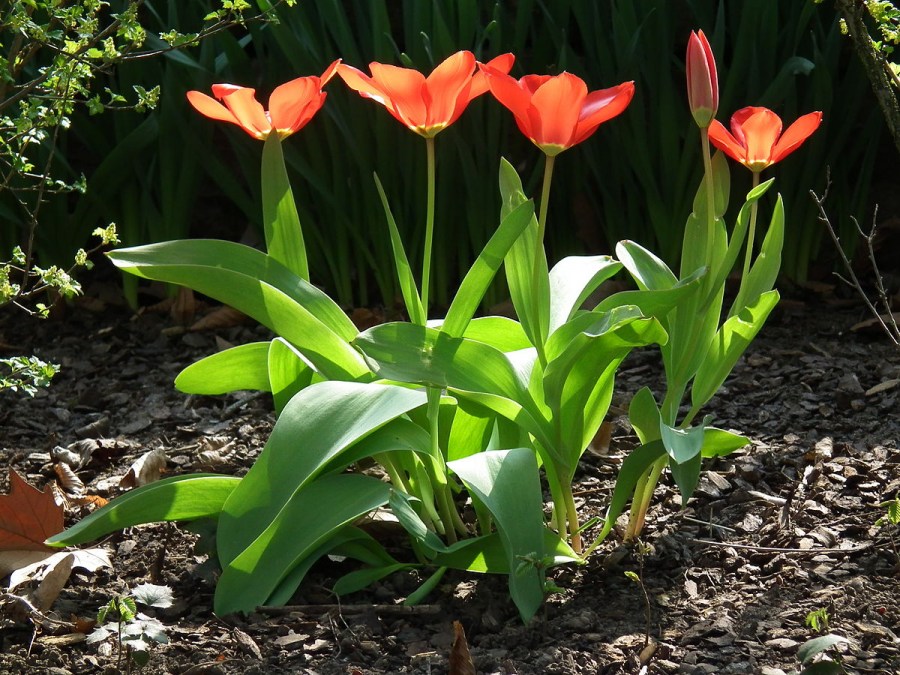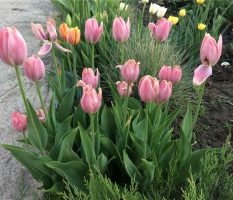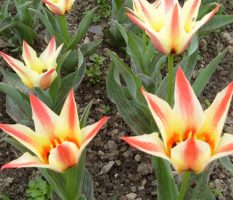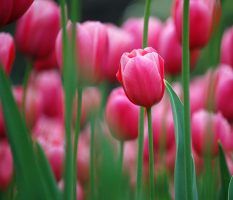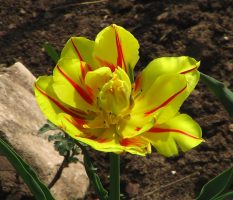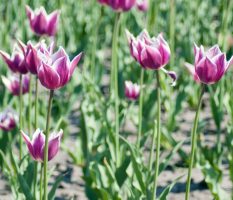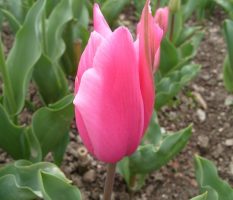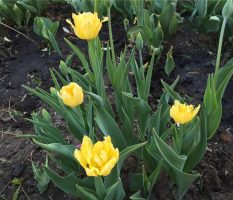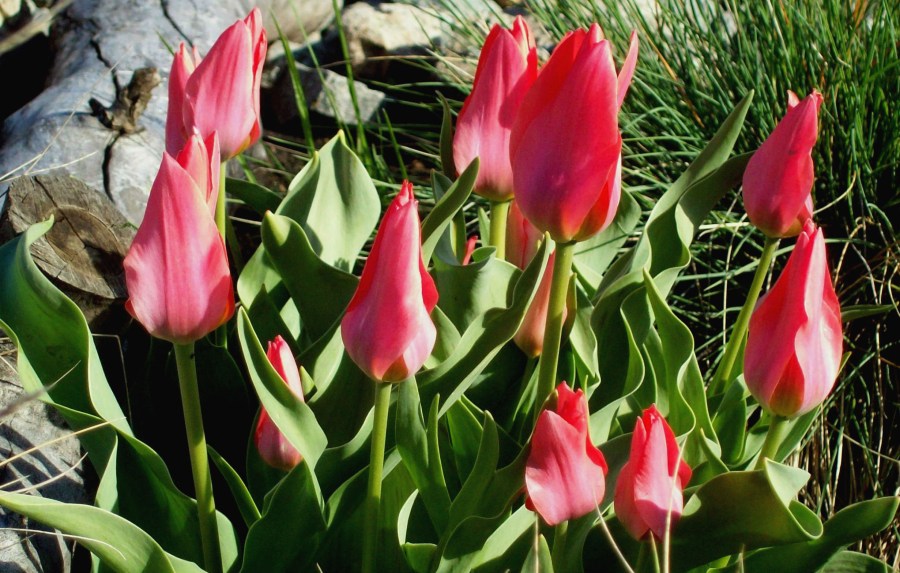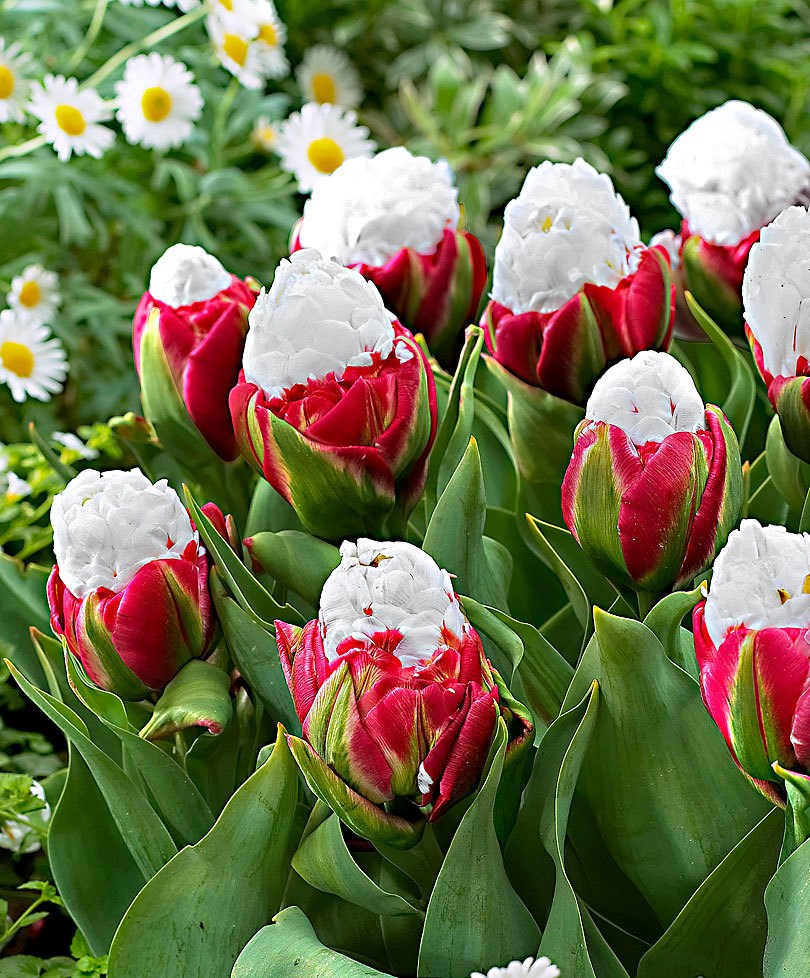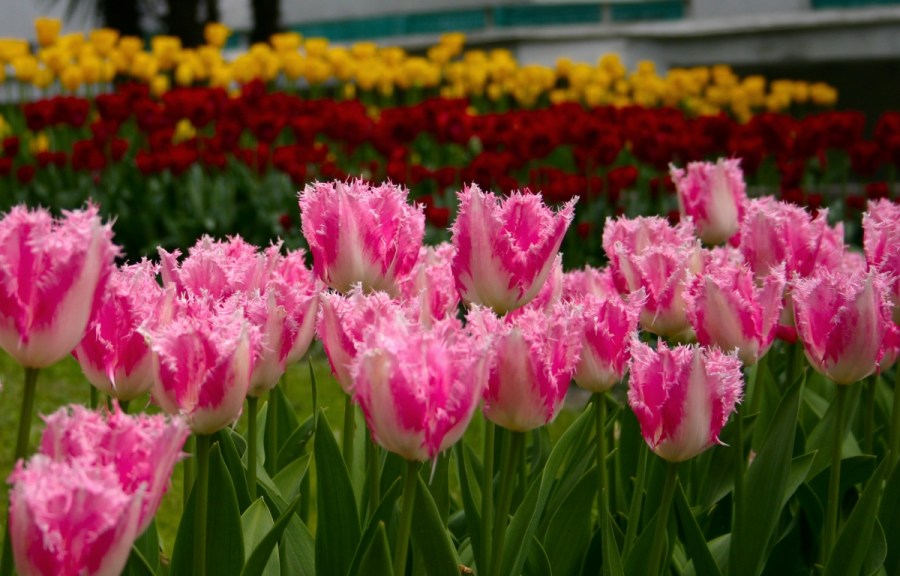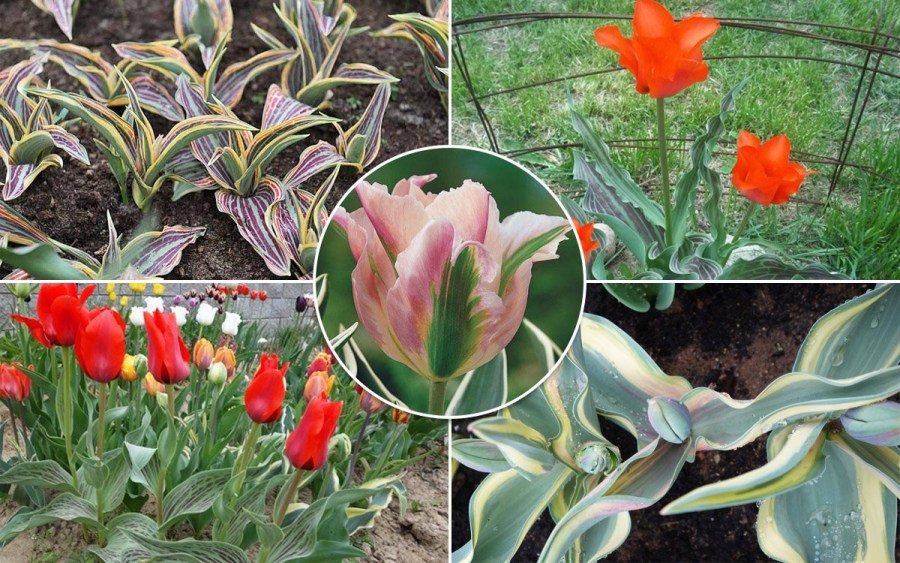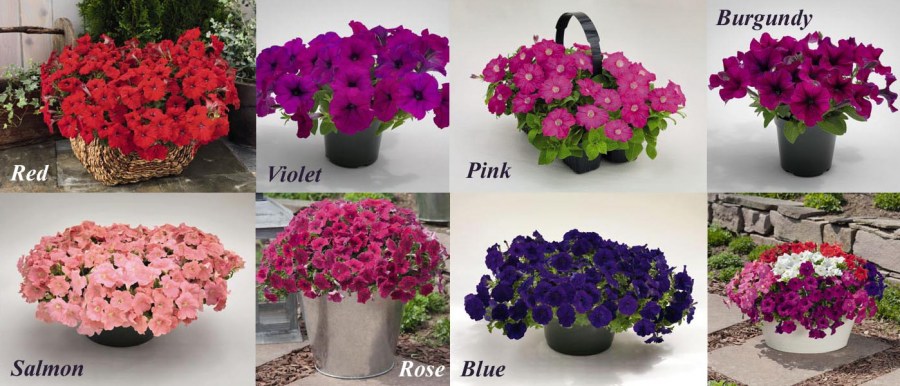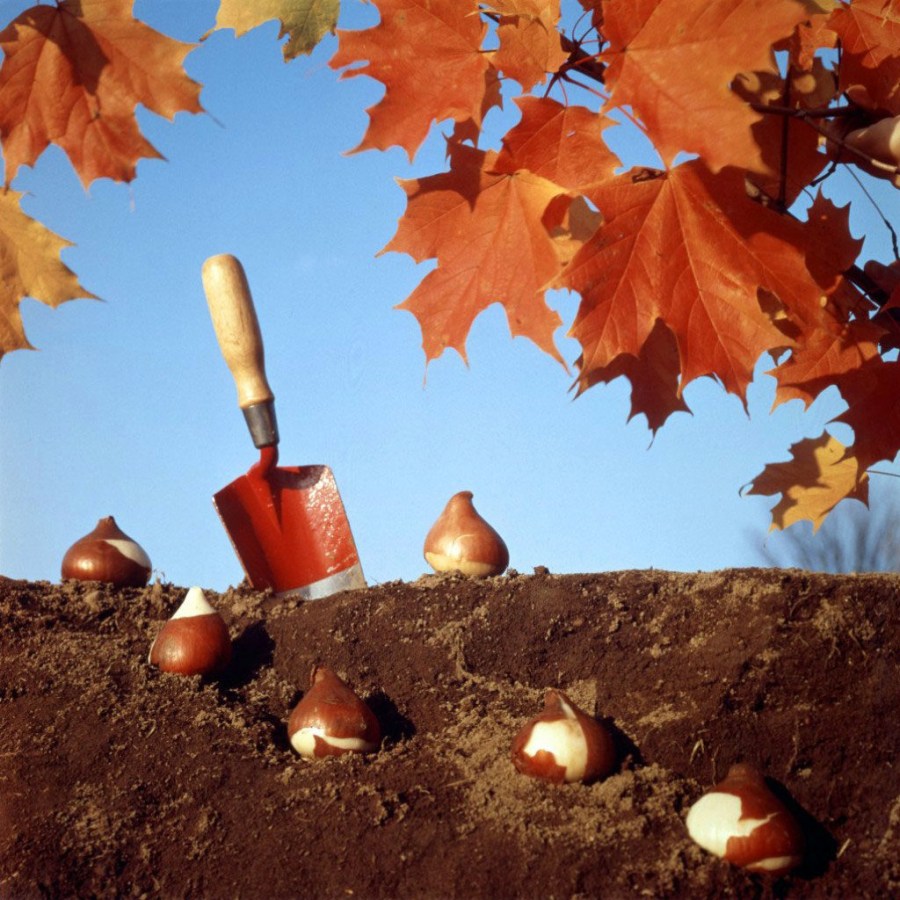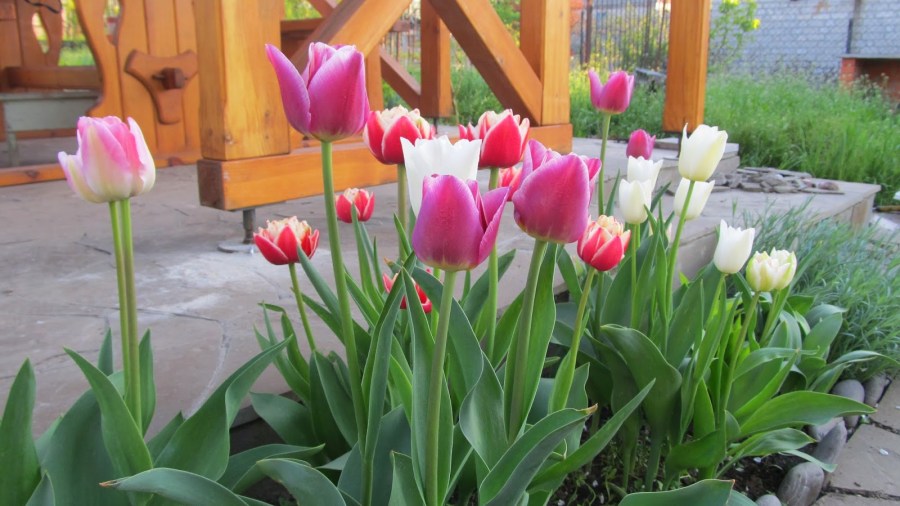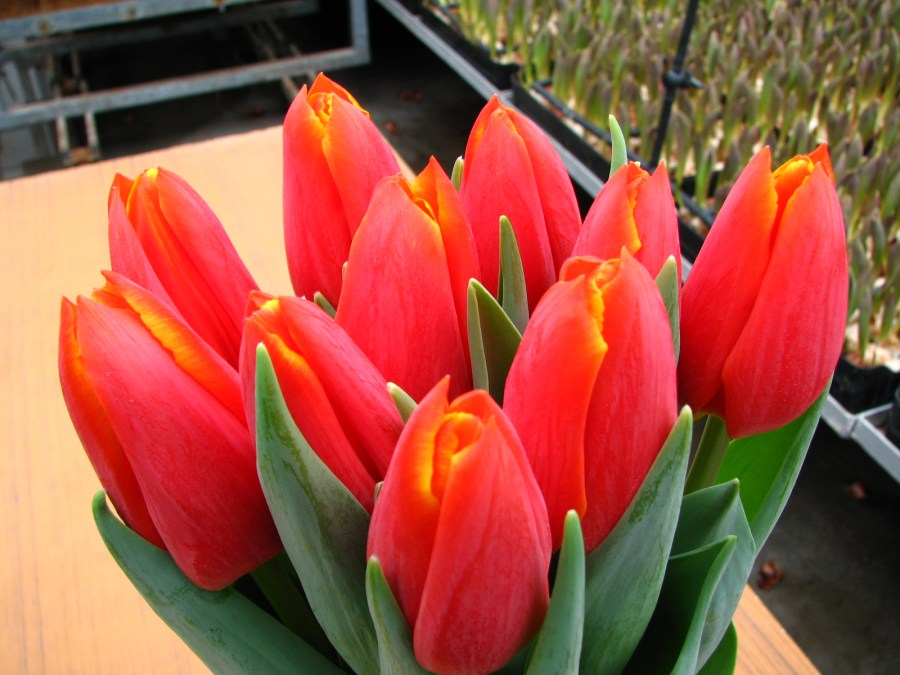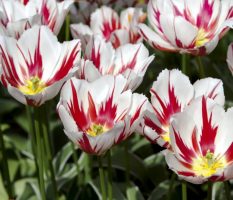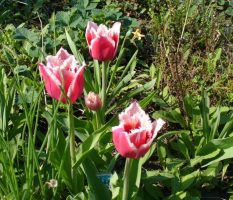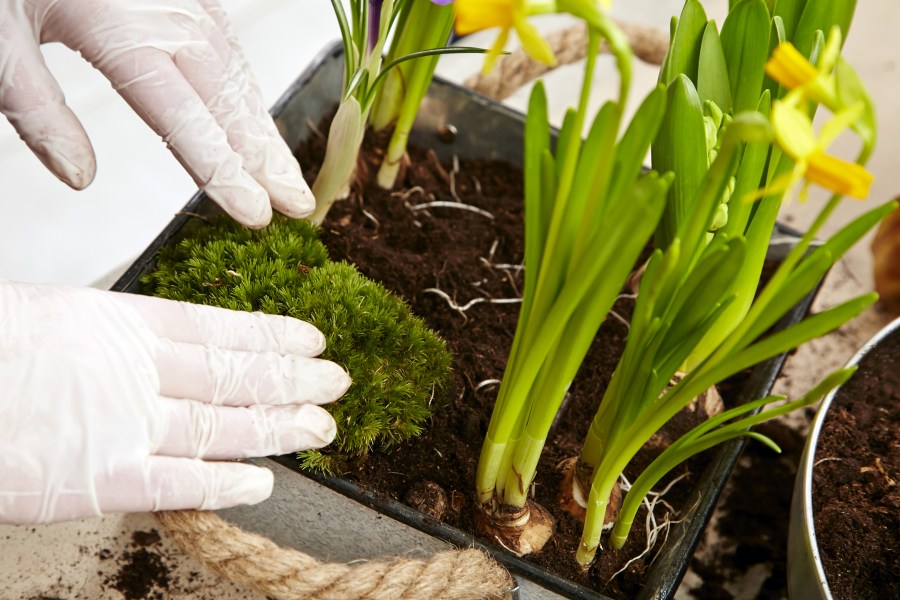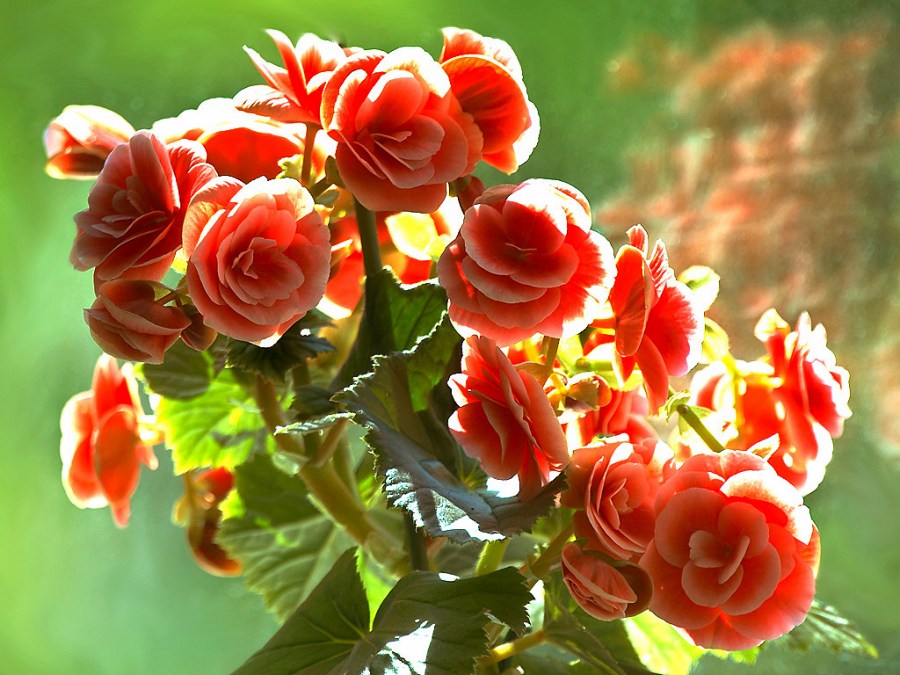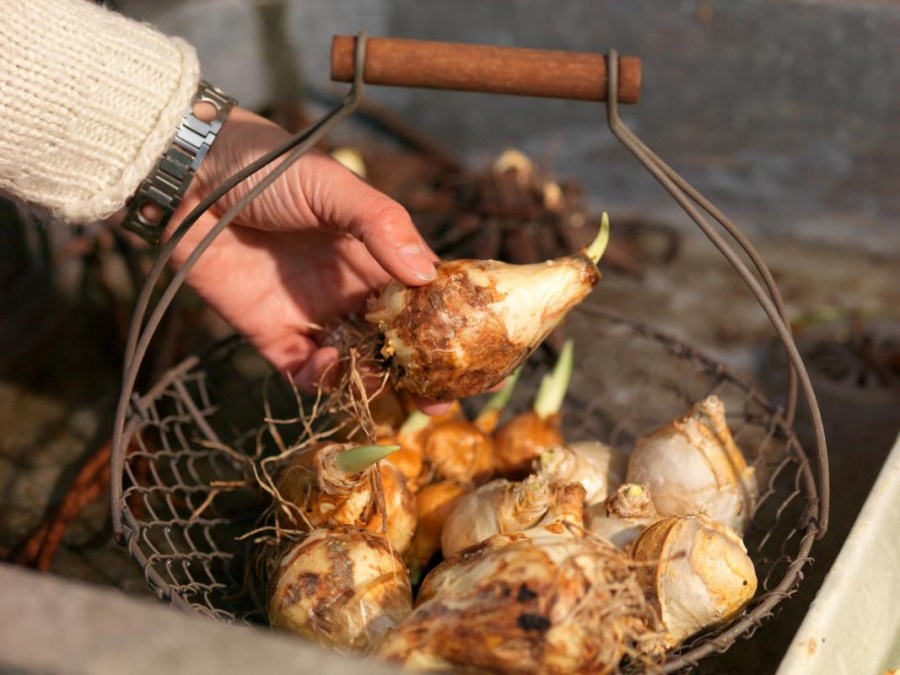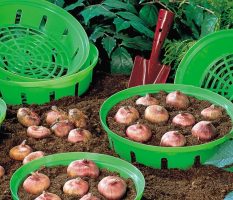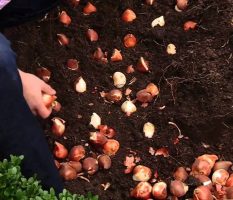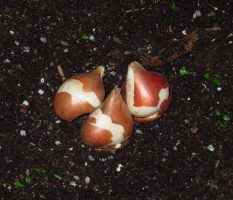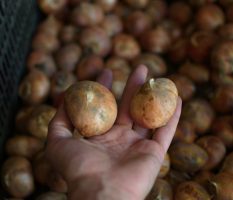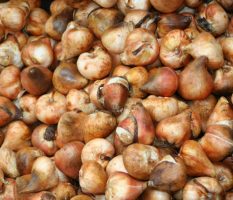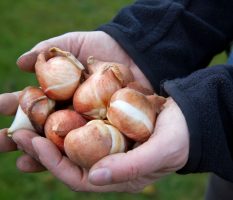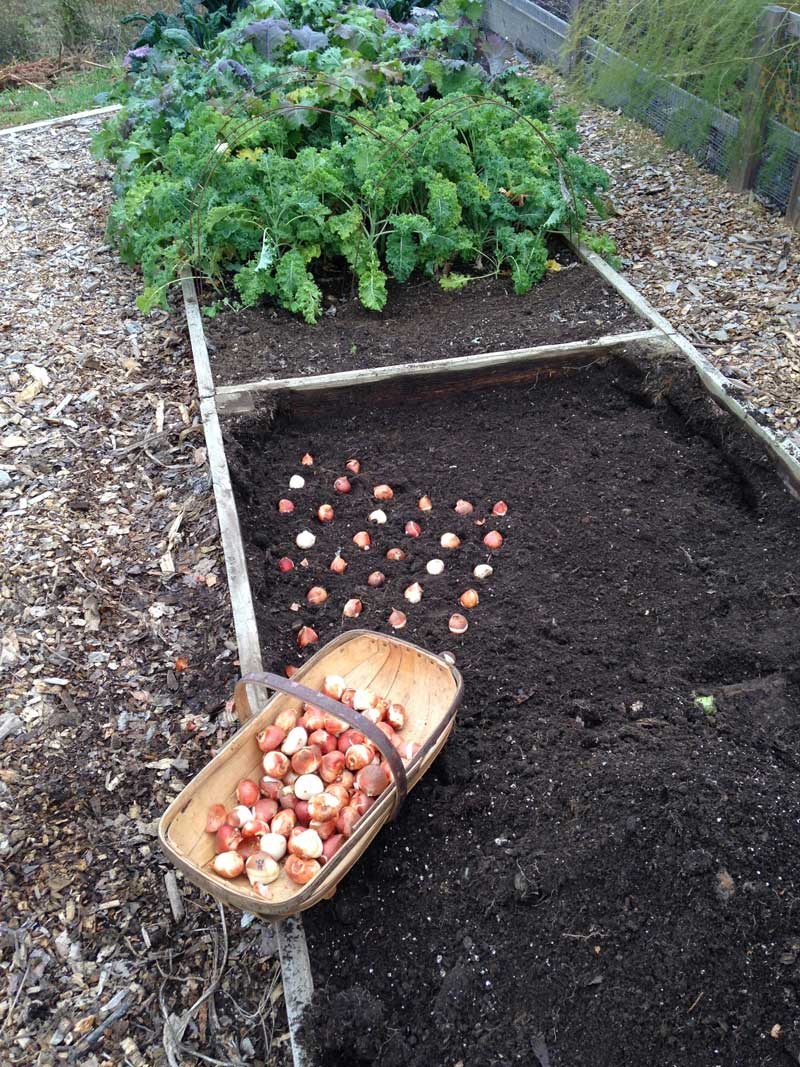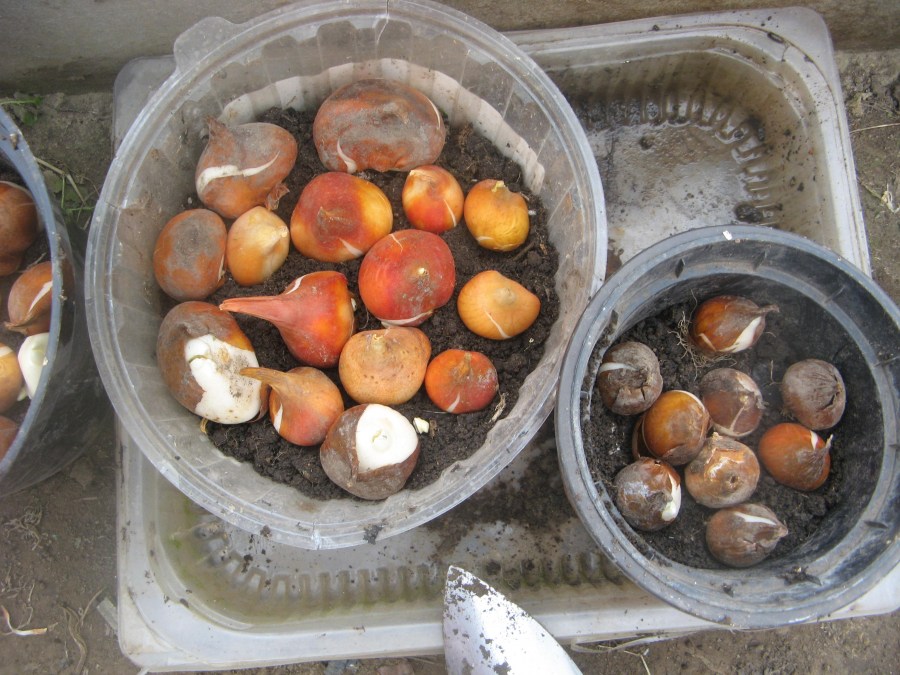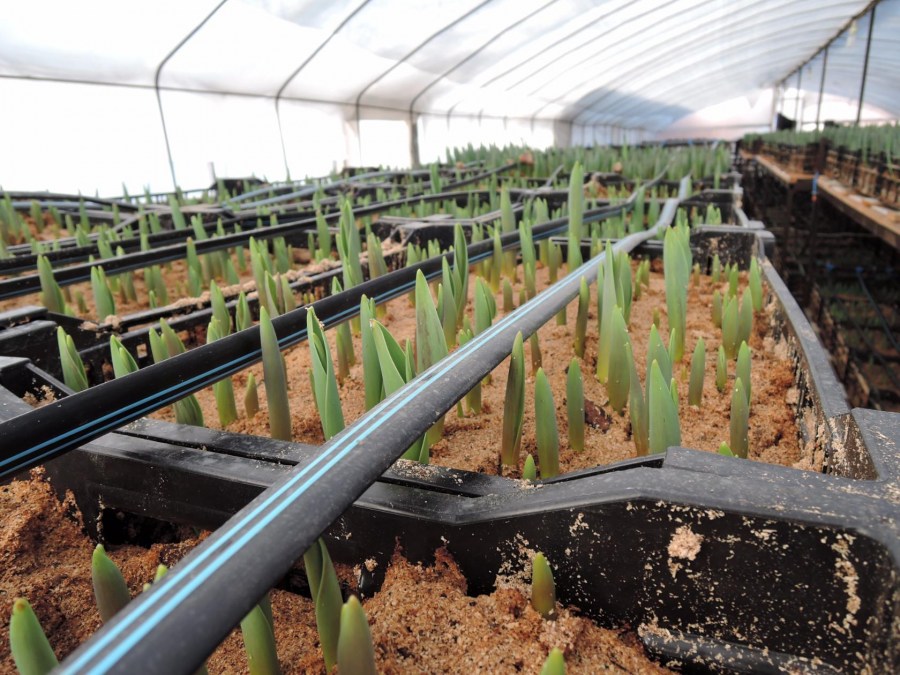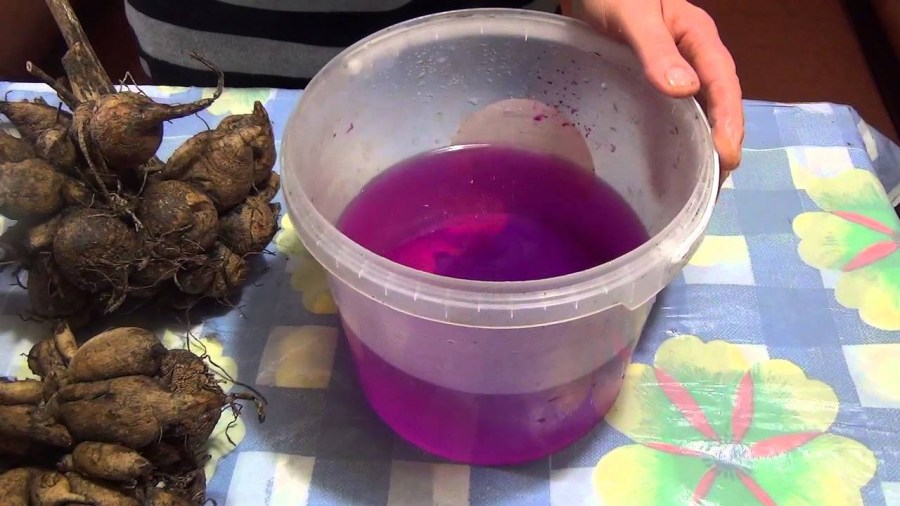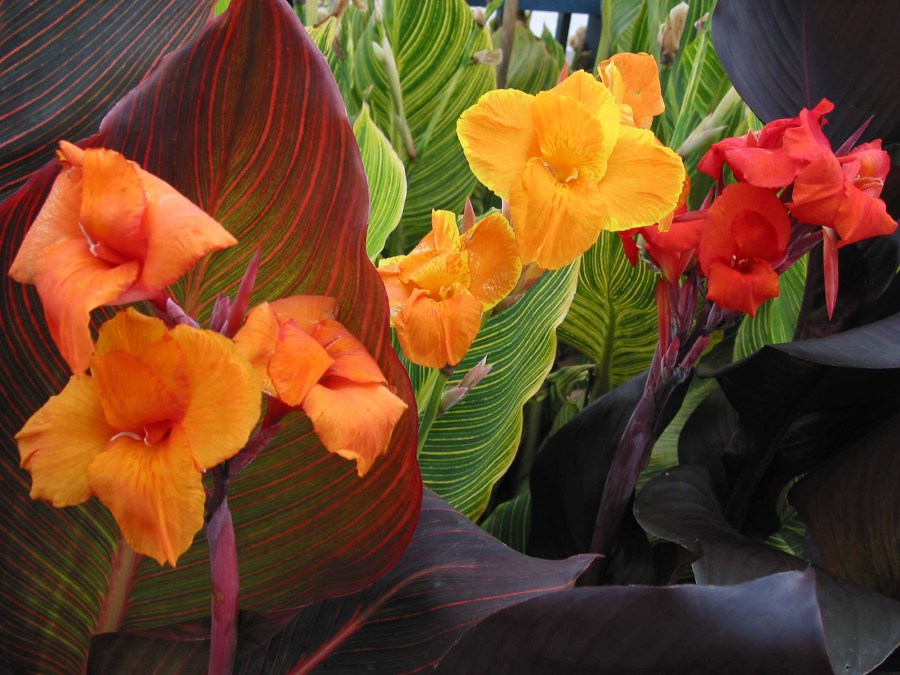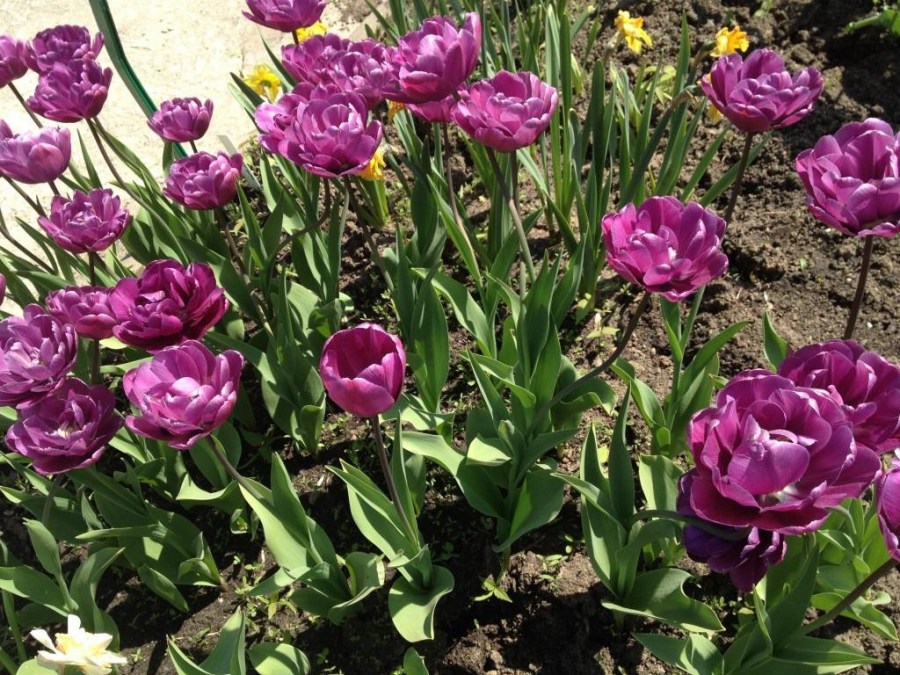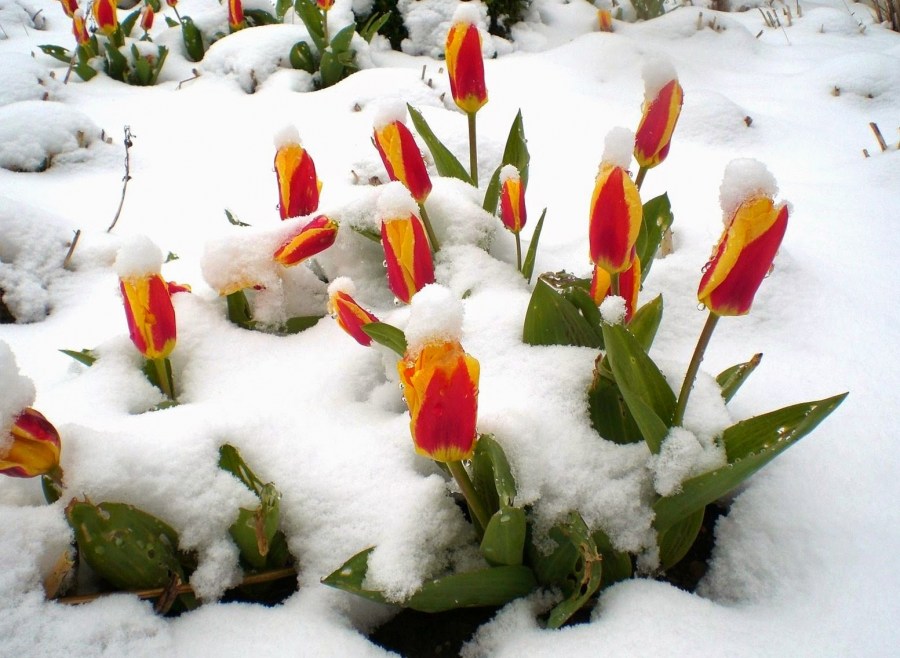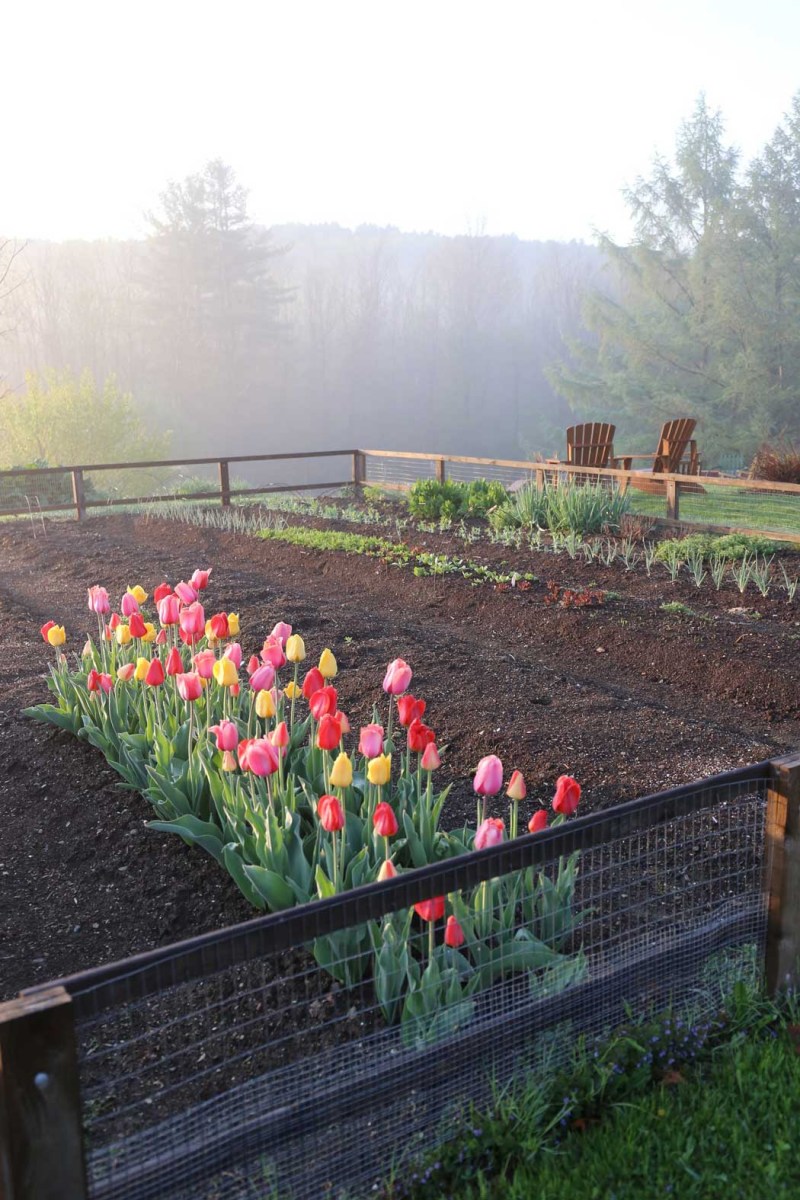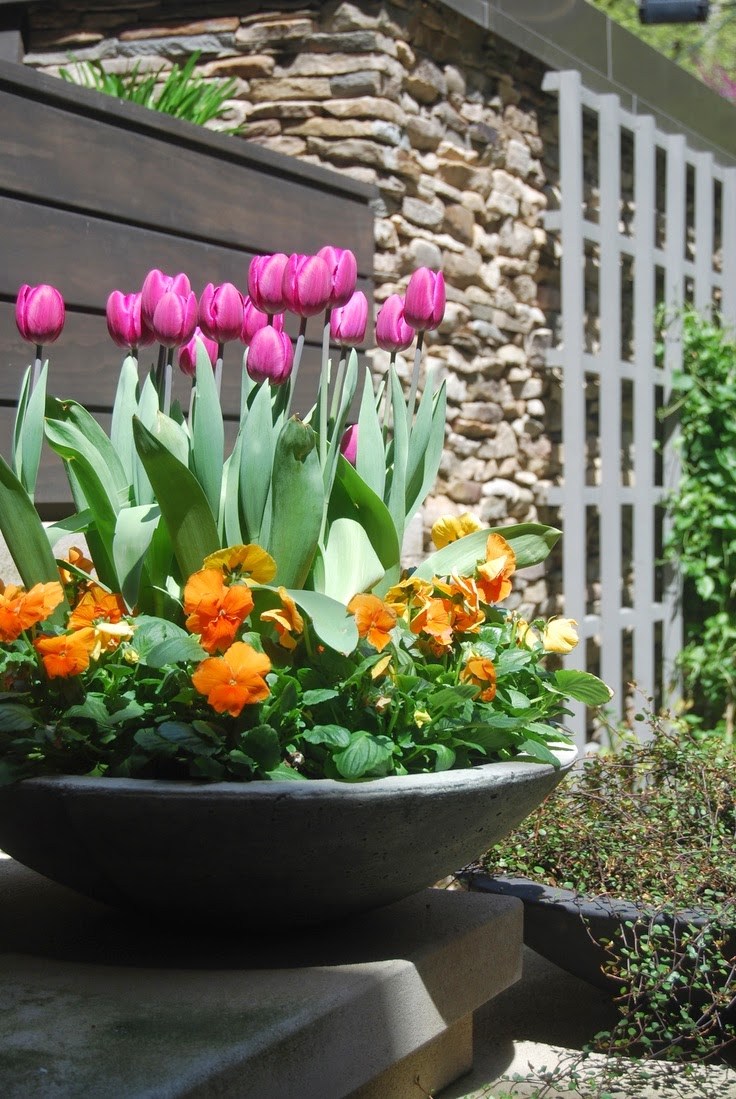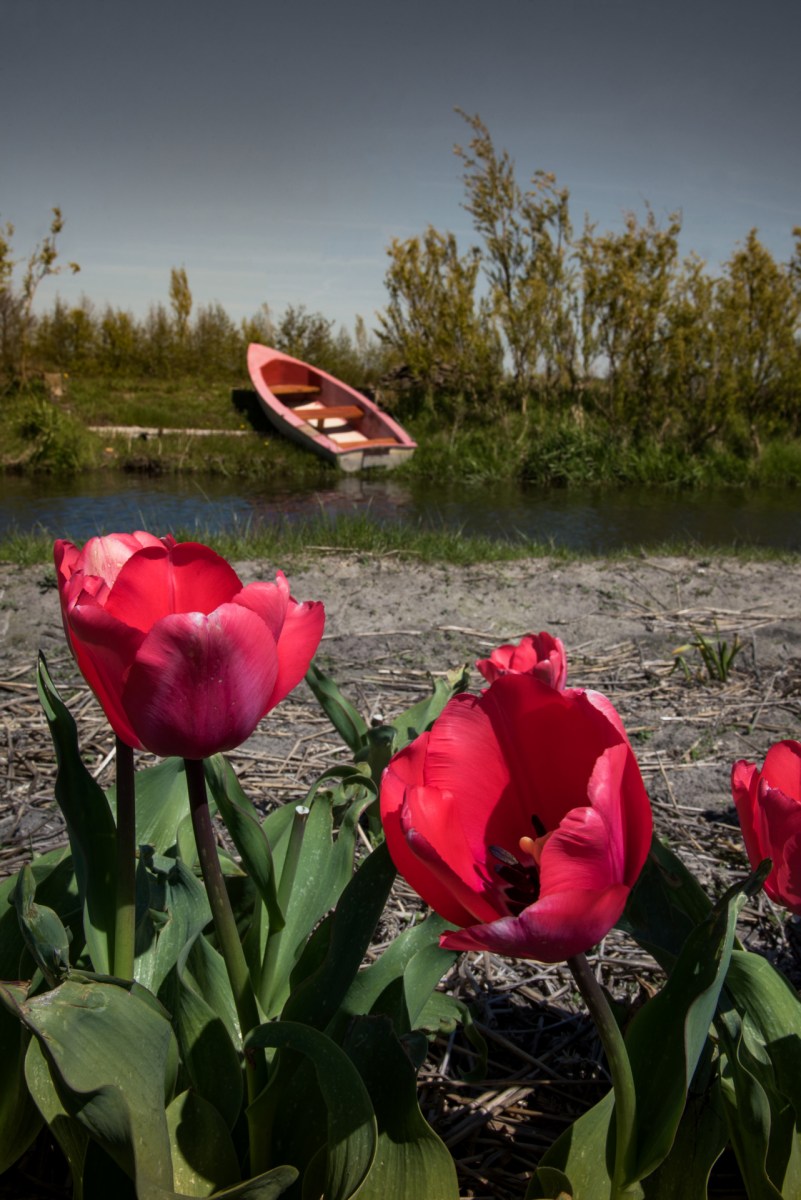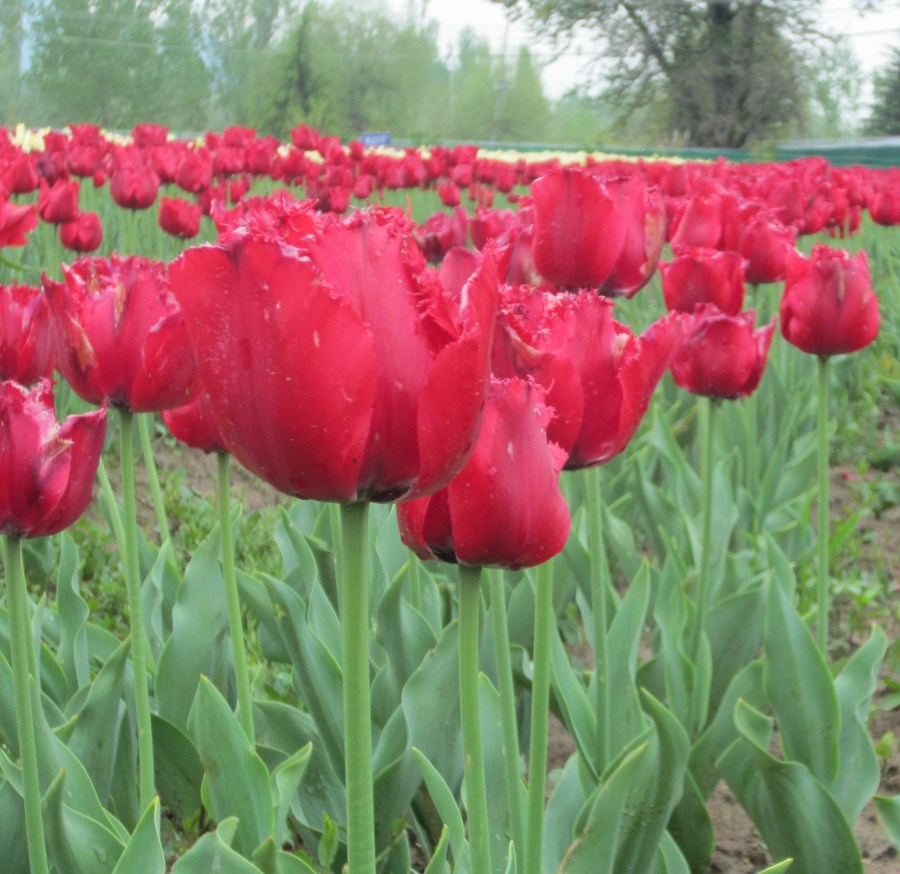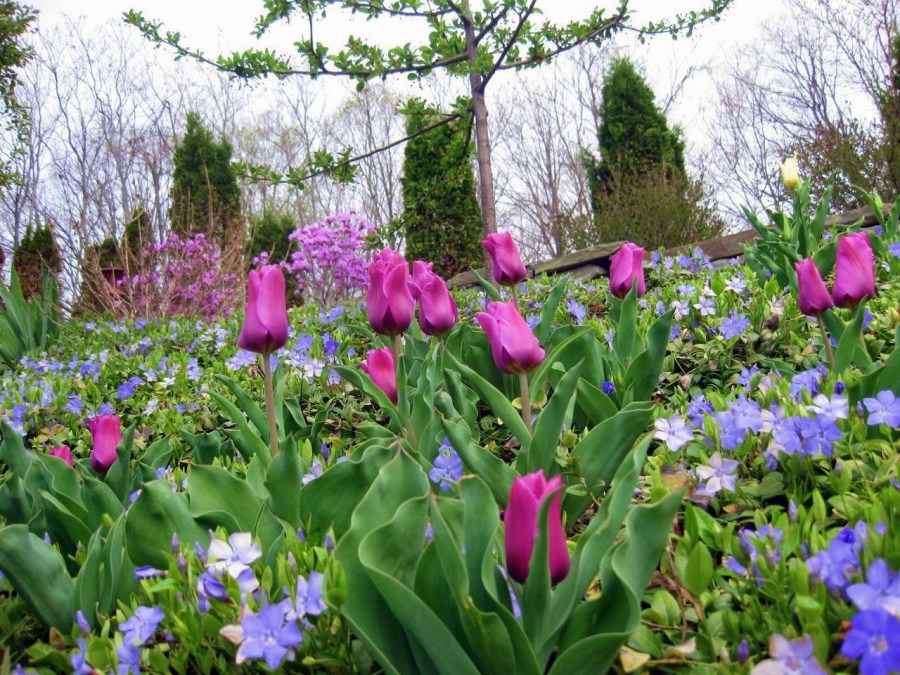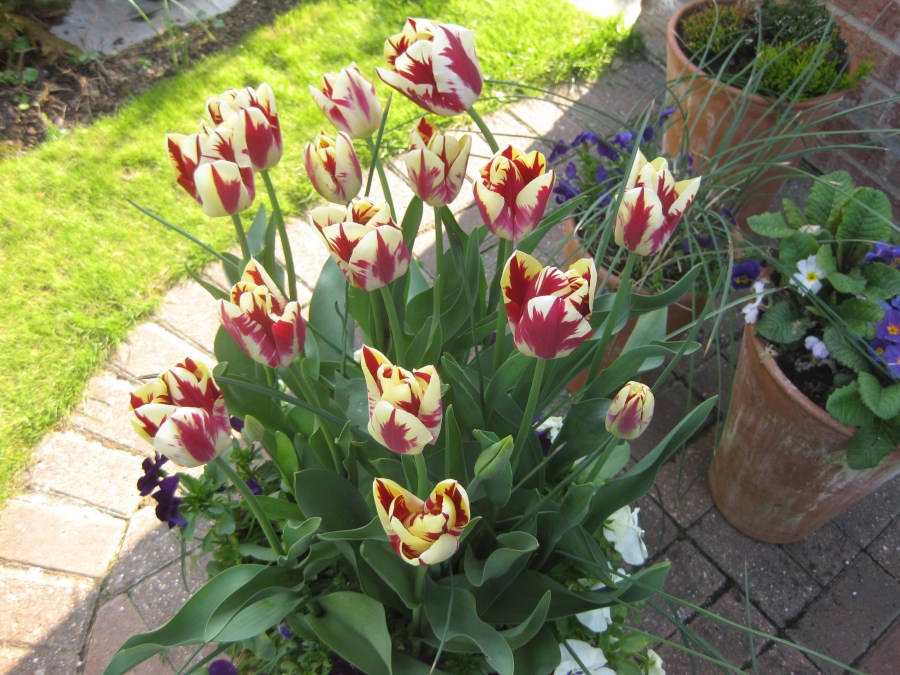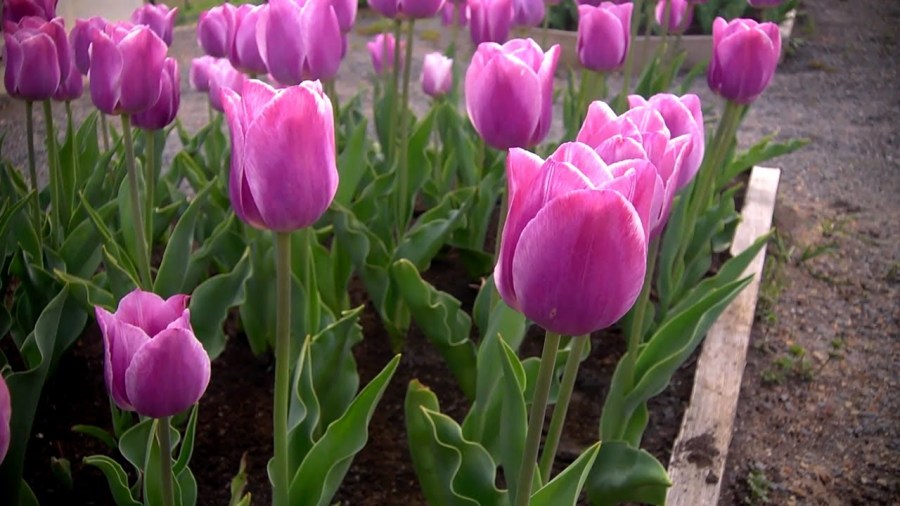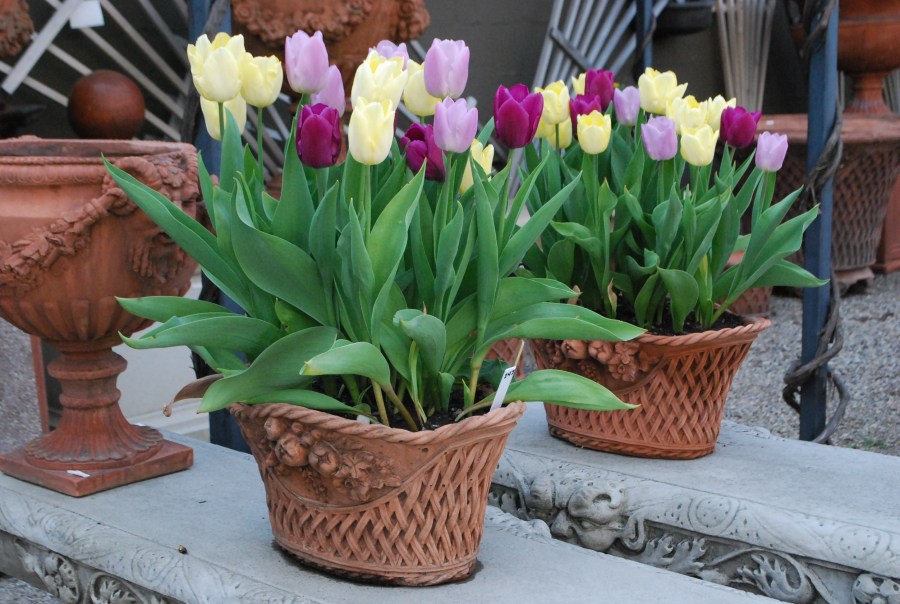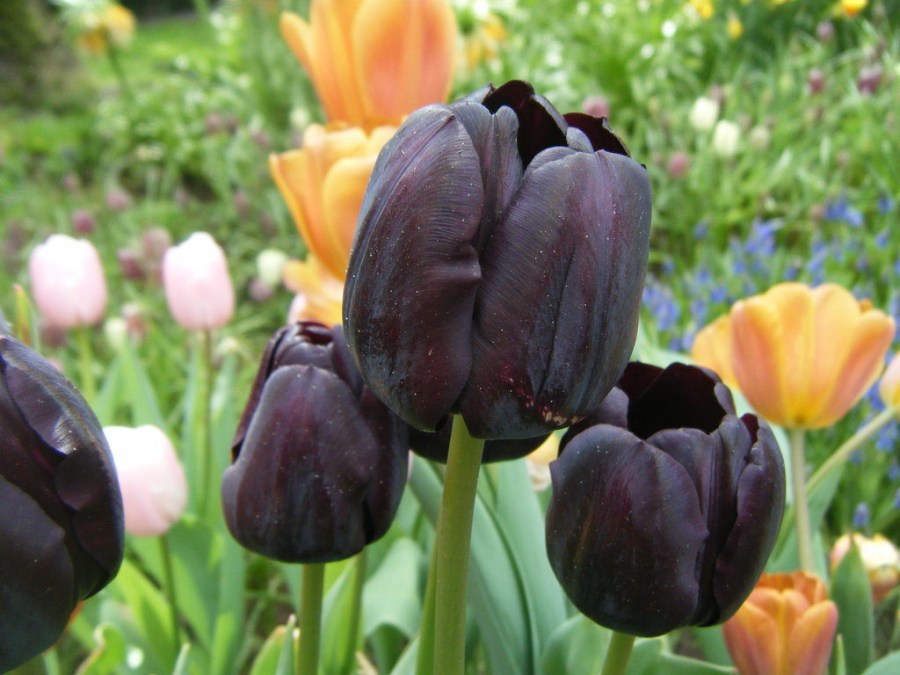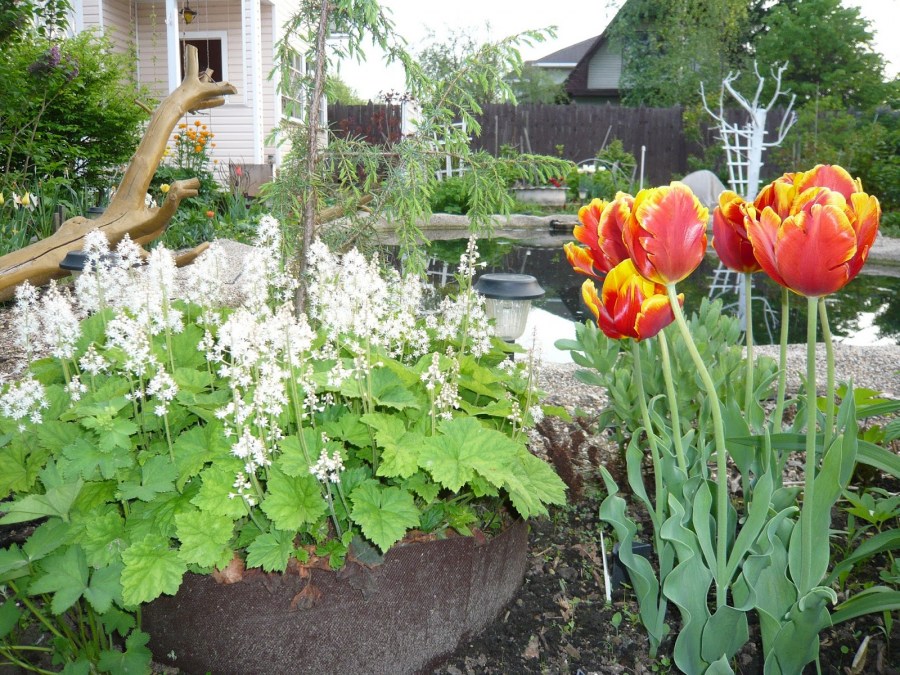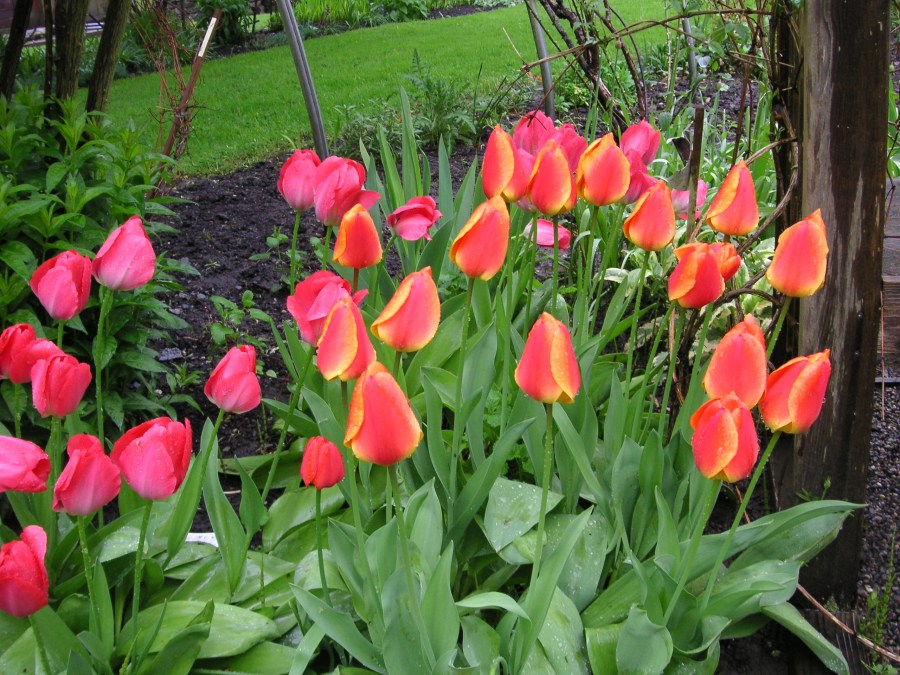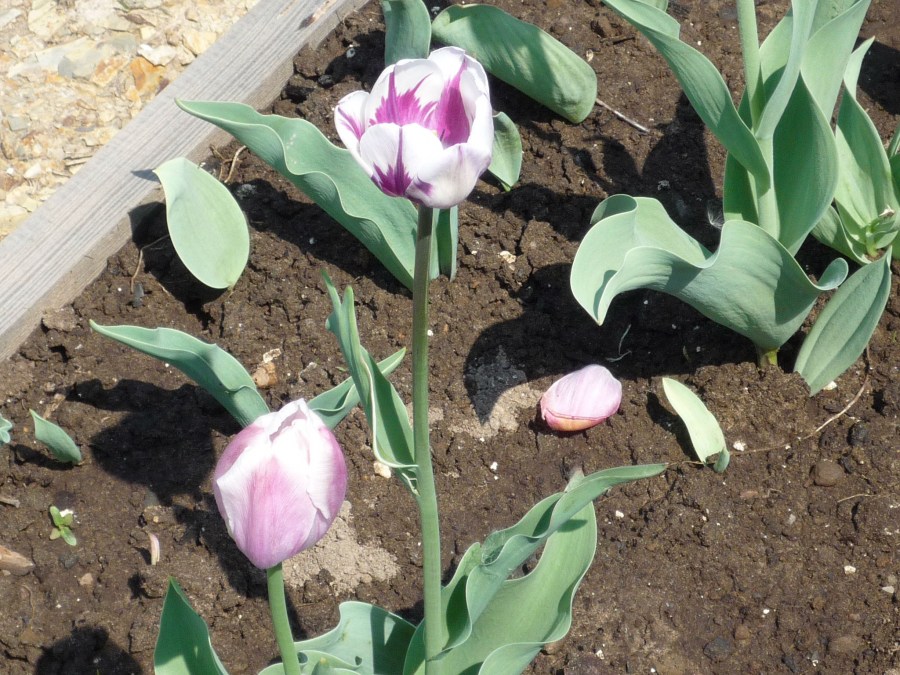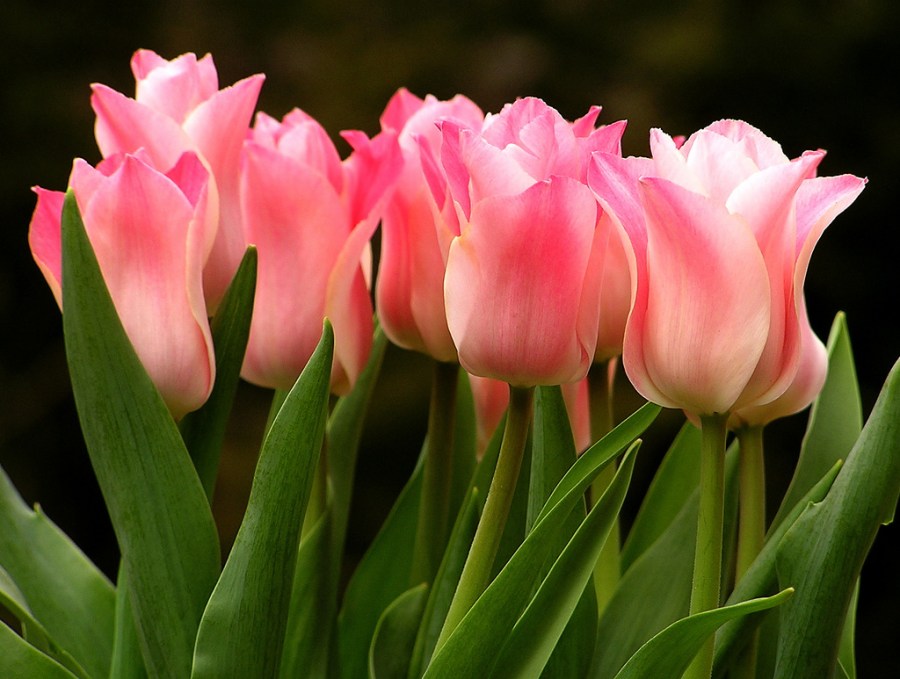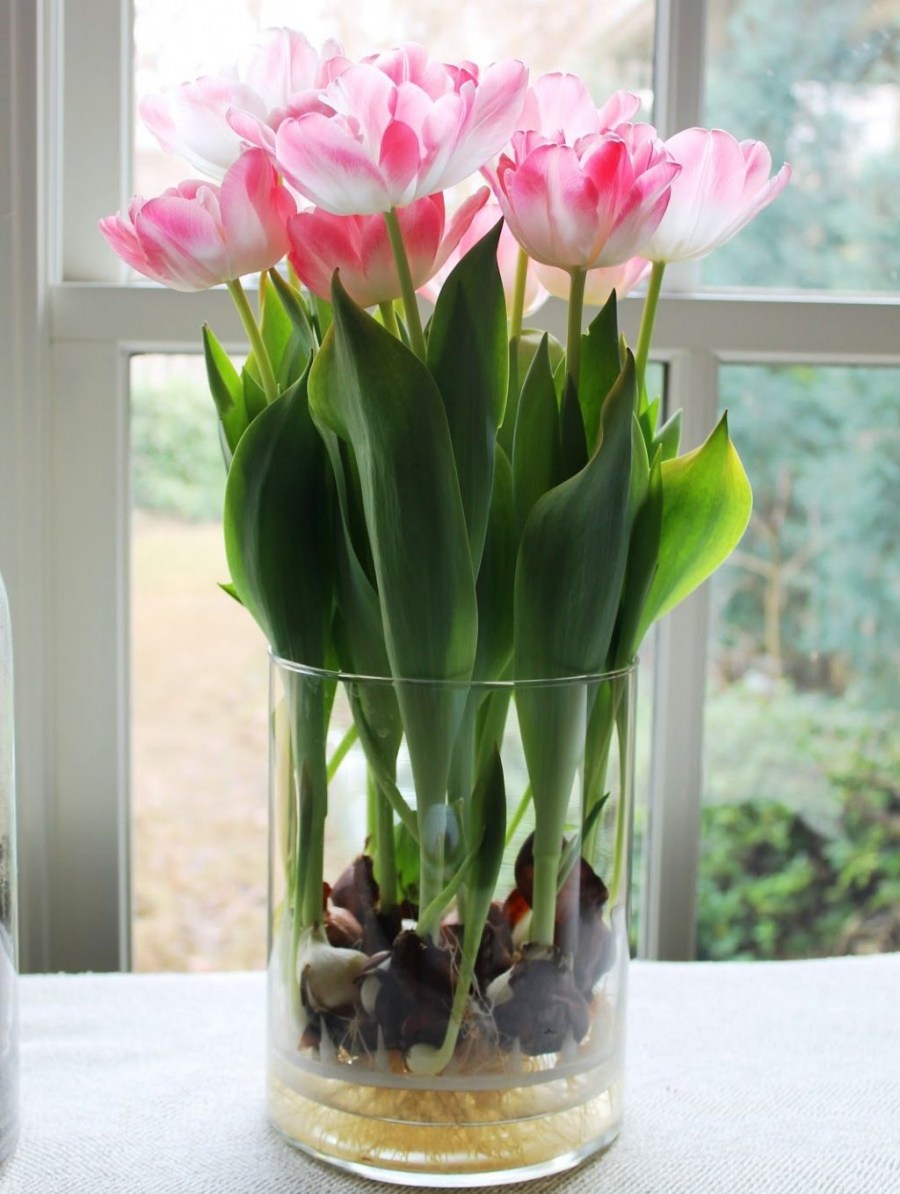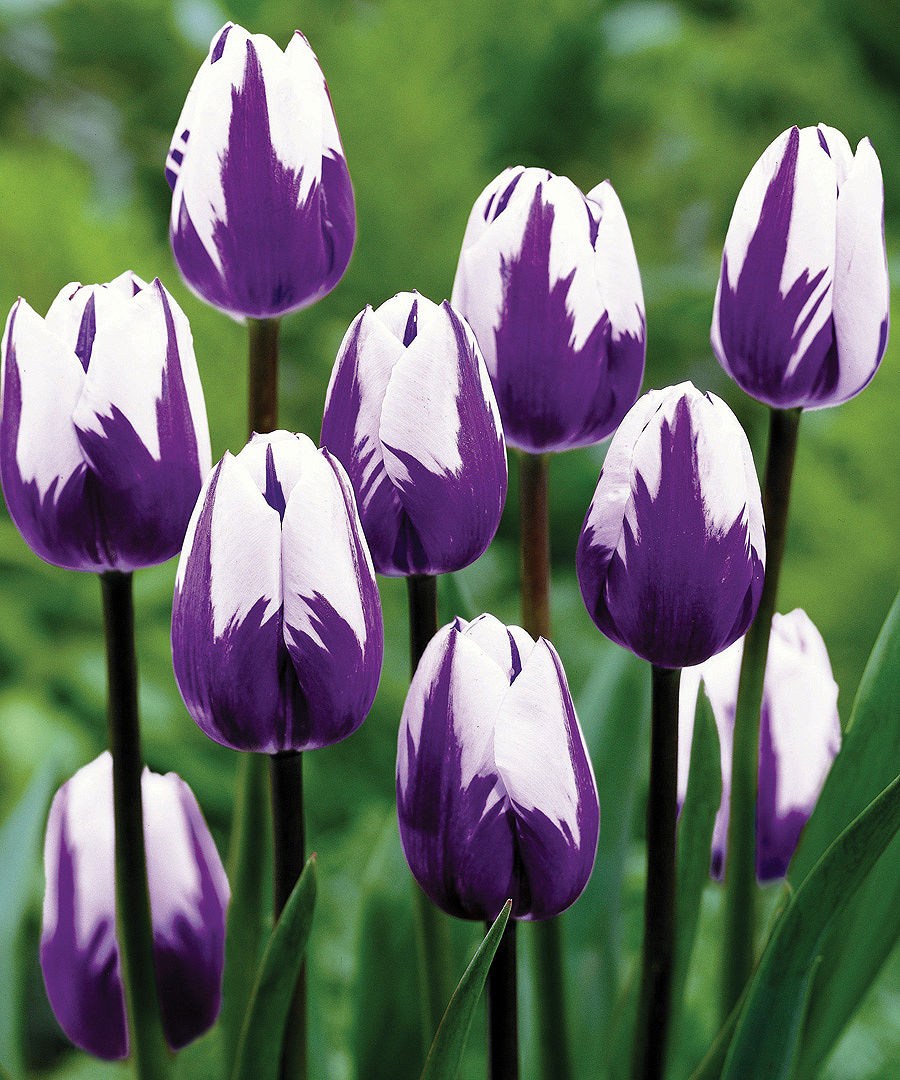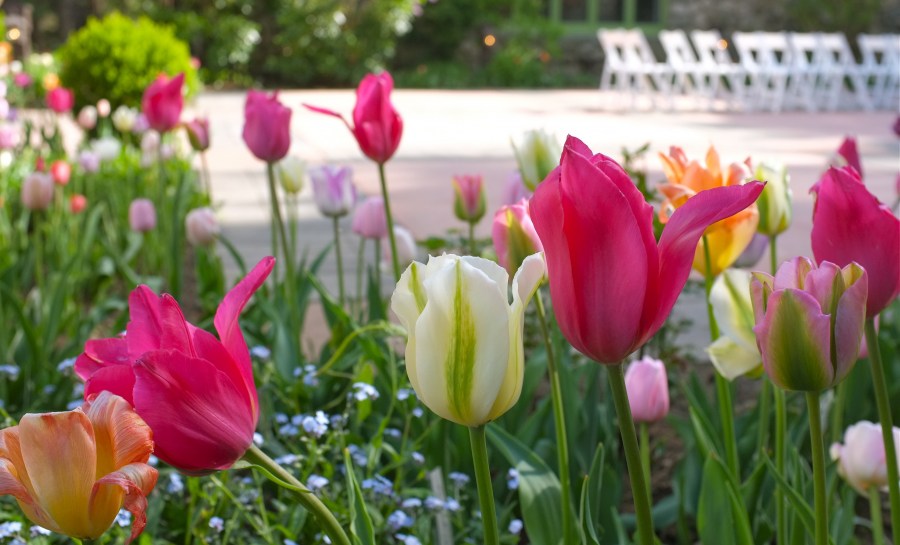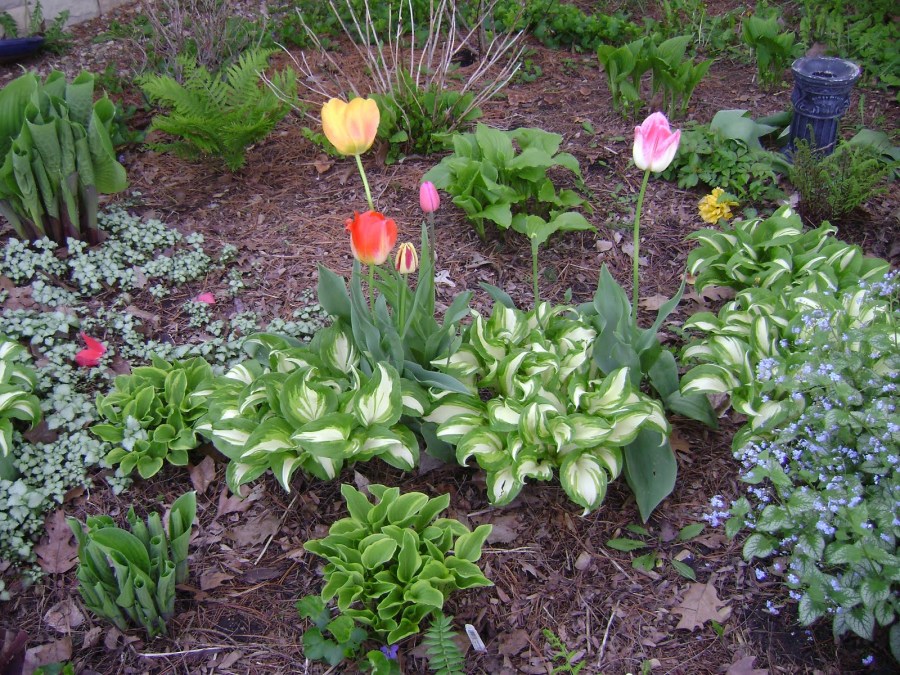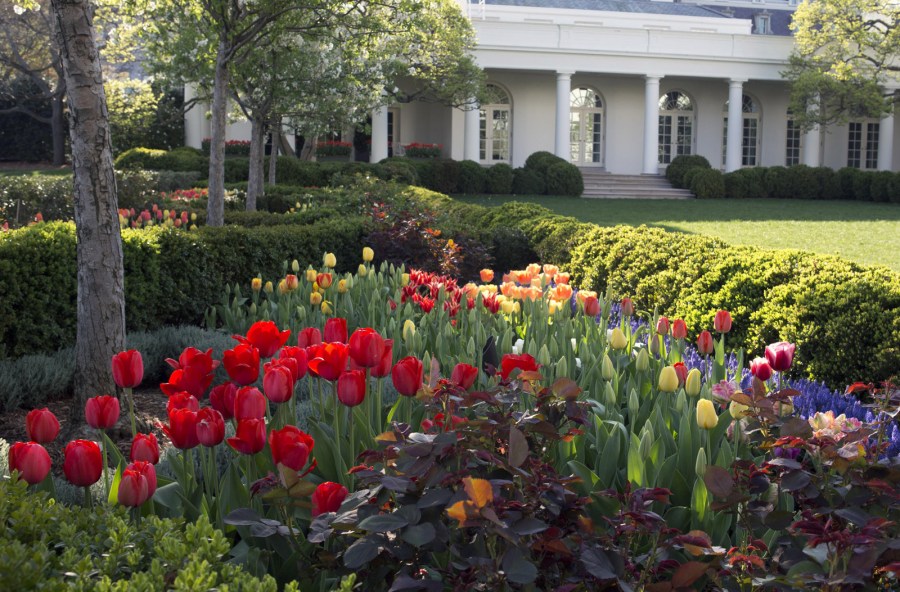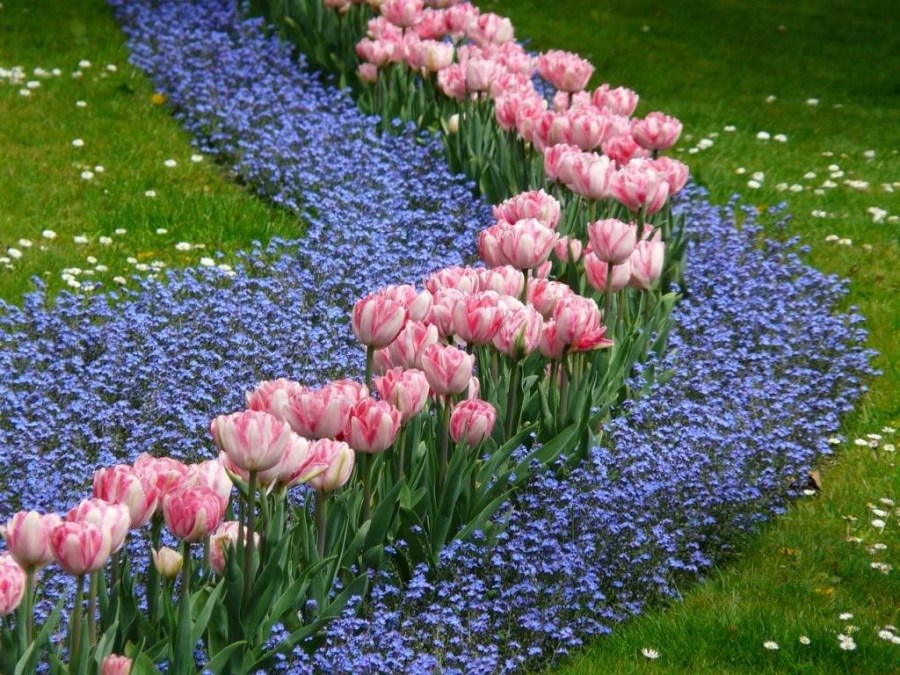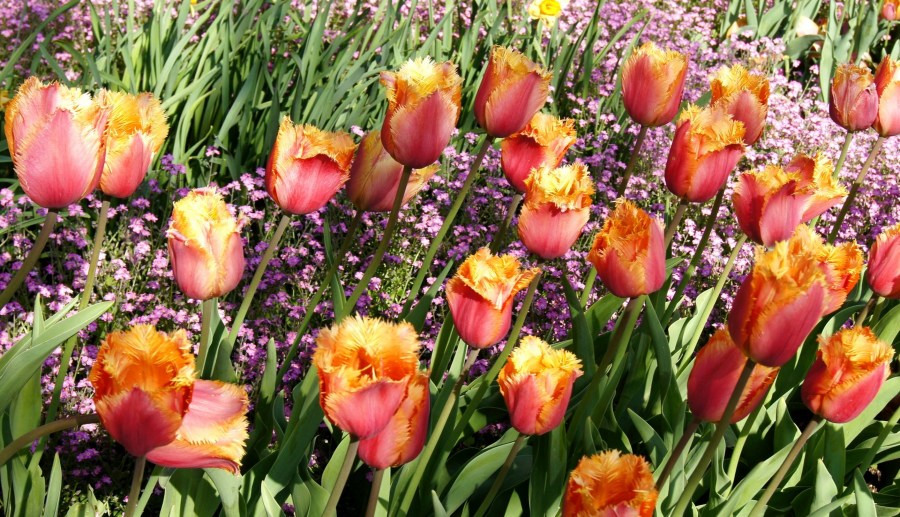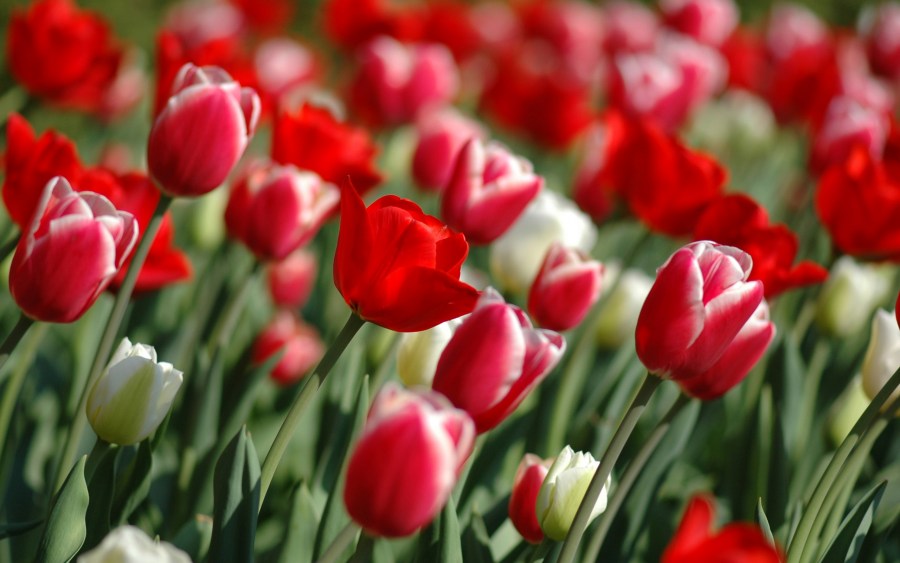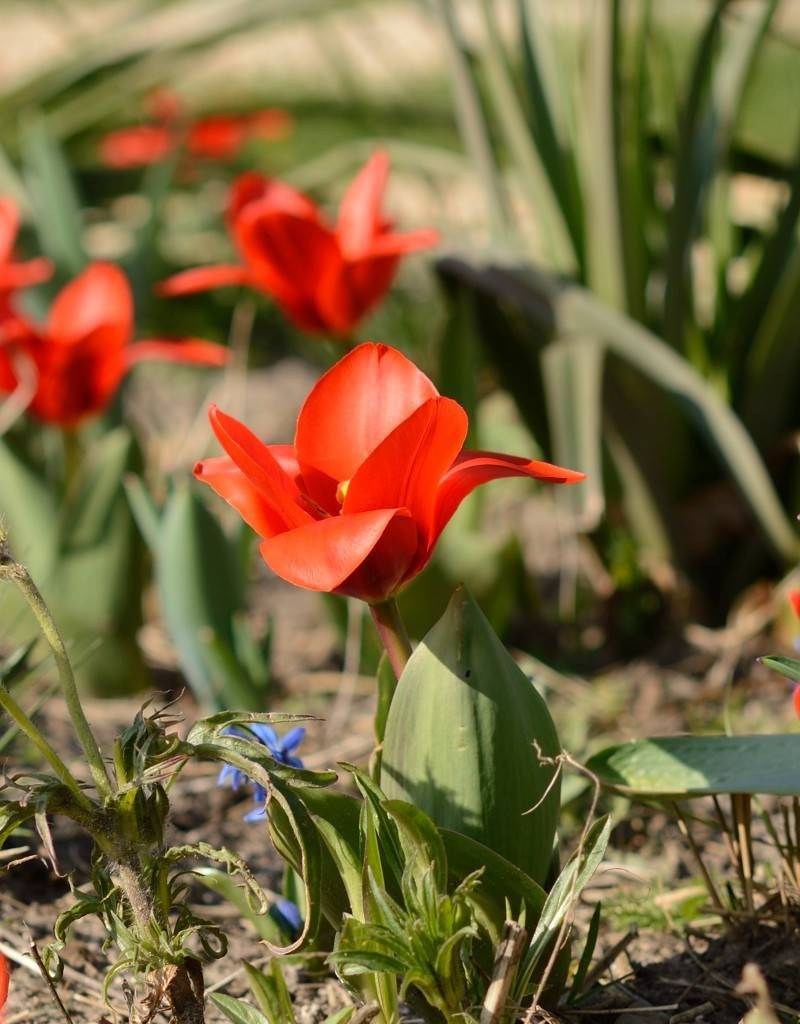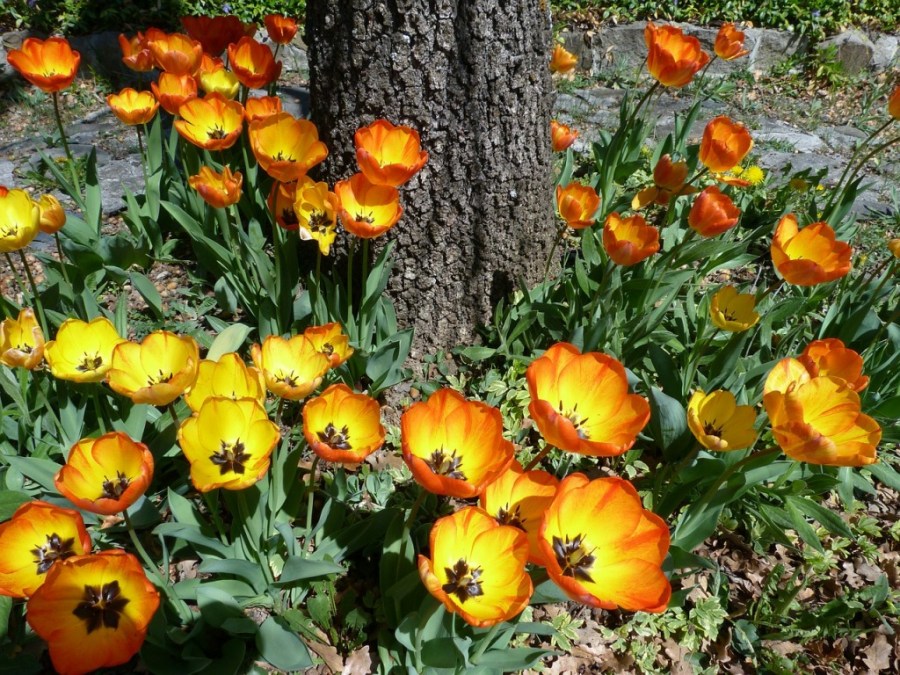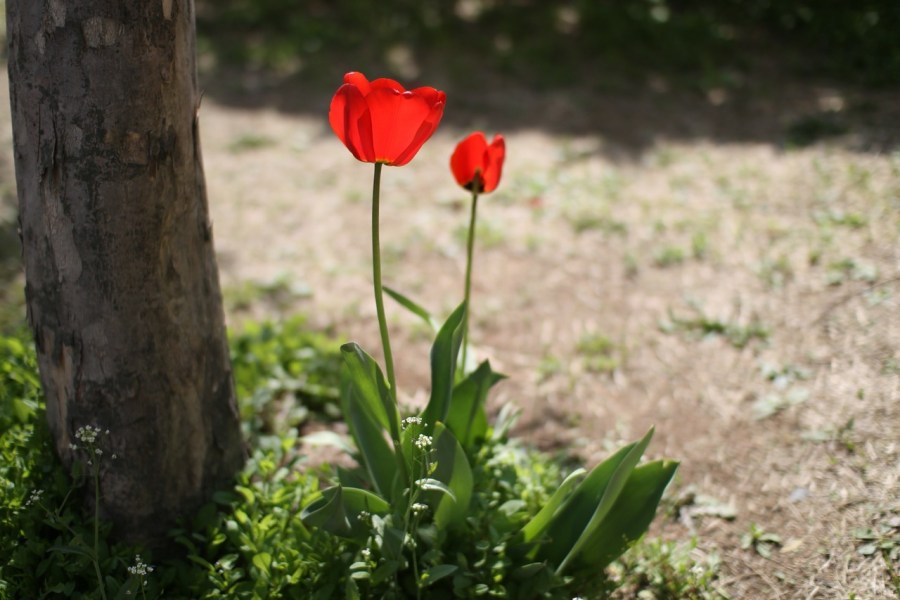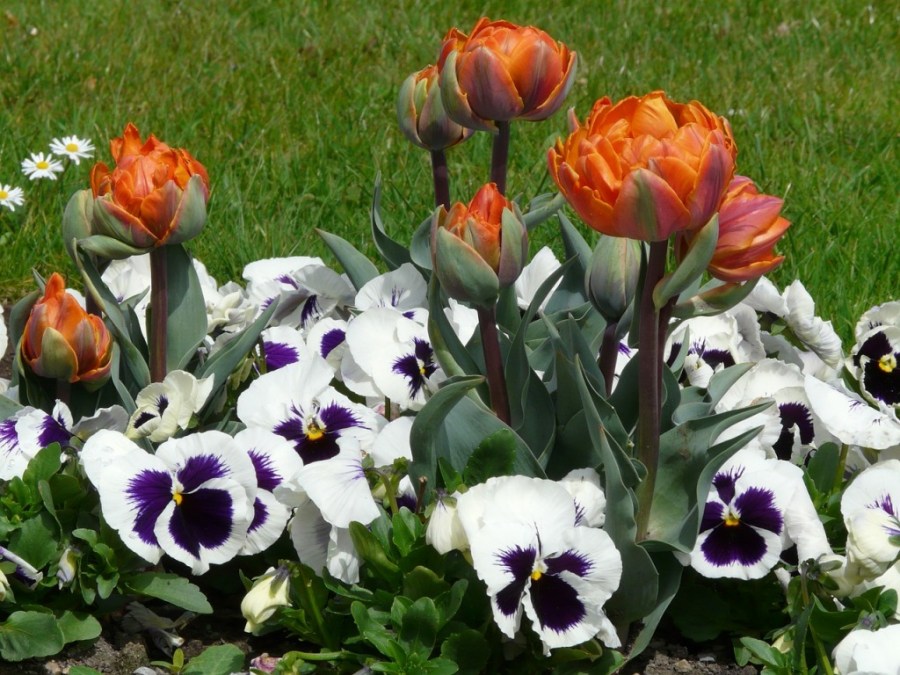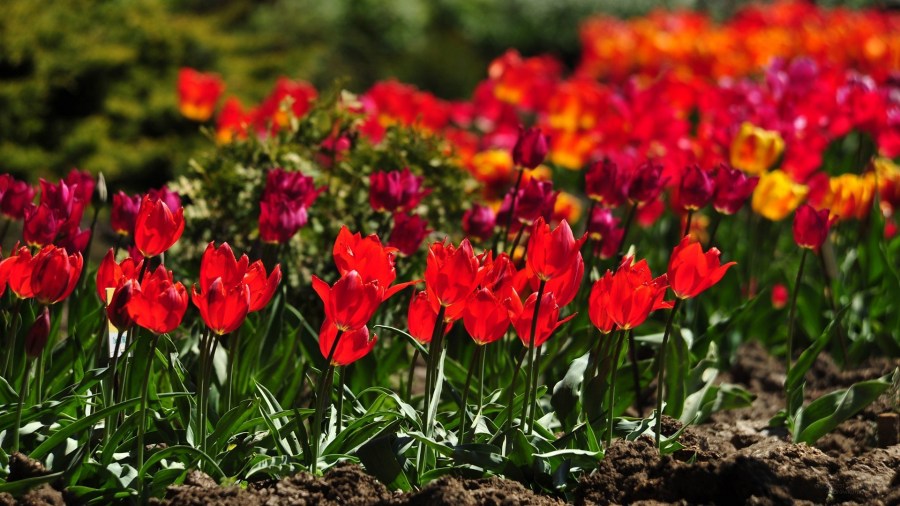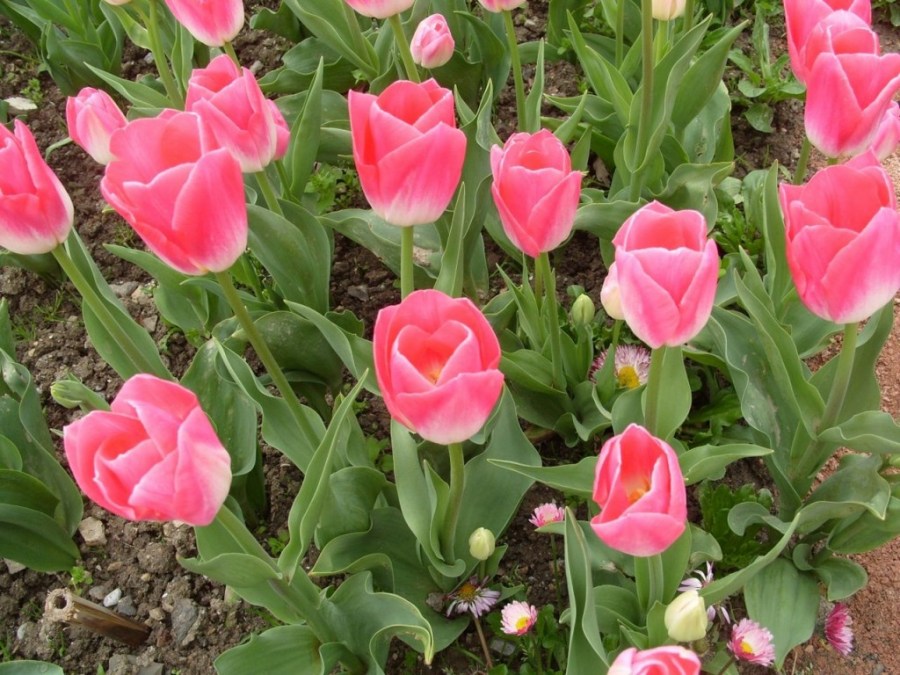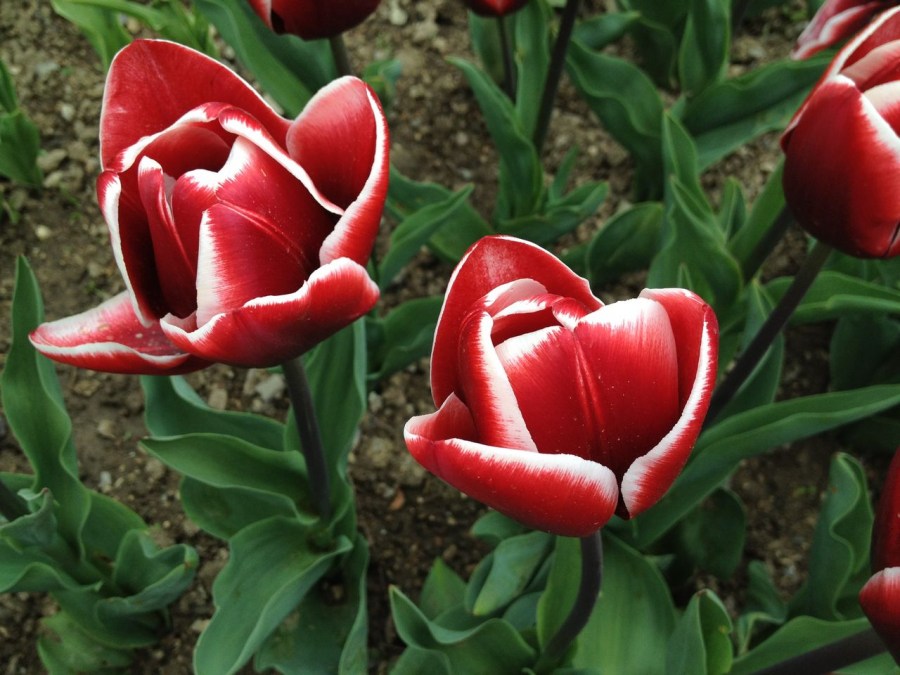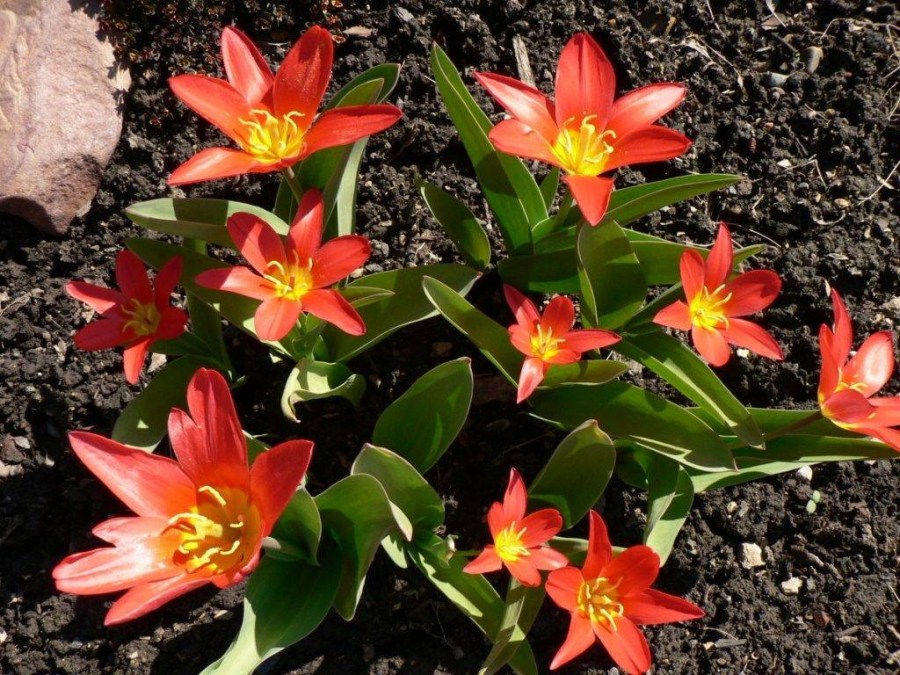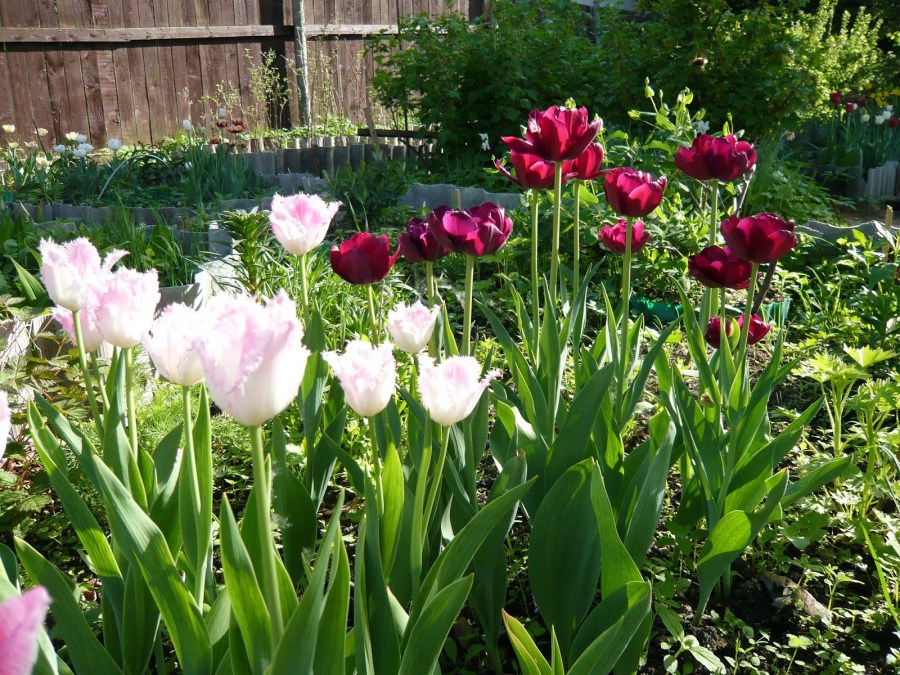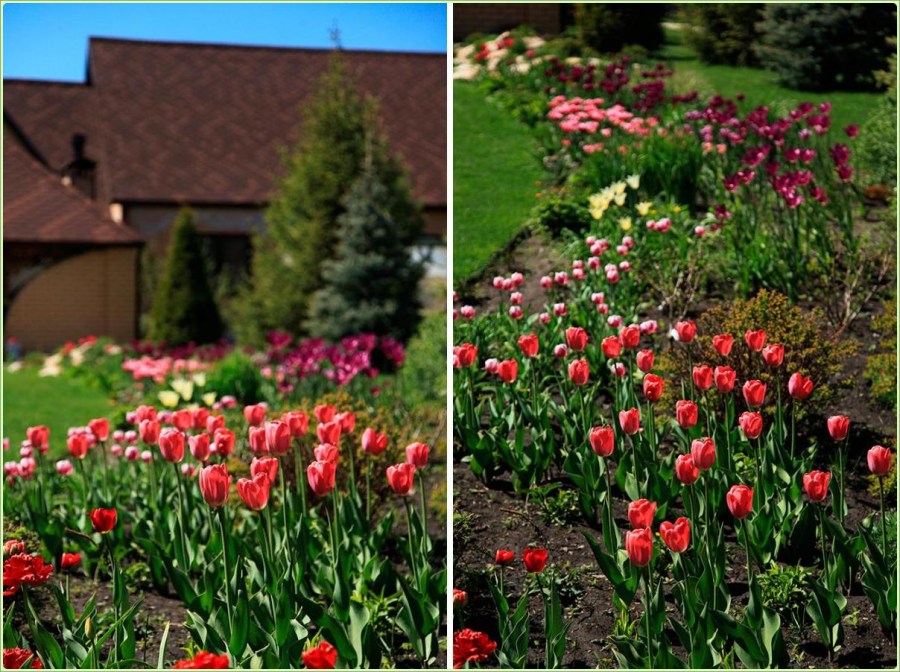Tulips - how to grow at home? 150 photos of the main types of flower
Tulips are classified as unpretentious perennial plants that propagate by tubers. These simple, vibrant flowers give the flowerbed a festive look. A bouquet of tulips can become a modest but warming gift. In caring for these plants, there are a number of nuances that will help preserve their health. The time and duration of their flowering, as well as the size of the buds, will depend on this.
Optimum conditions for tulips
Looking at the photos of tulips, each gardener wants to get his own flowerbed similar result. However, some note that the plants they planted do not bloom. Or it happens too late. It is worth considering a number of reasons:
It is impossible to get a healthy sprout from small or damaged bulbs. When ingested, this planting material can rot or become food for mice.
Tulips planted in the shade may refuse to bloom due to a lack of sunlight necessary for them. Especially if wind and drafts are rampant on this stretch of land.
Each plant has its own developmental period, non-observance of which can delay flowering for a sufficiently long period.
Another mistake the novice gardener may be the wrong depth of planting. If there is insufficient depth, the risk of plant freezing is high, and at the other extreme, shoot emergence will be difficult.
Compliance with the rules of cutting flowers directly affects the health of the plant itself. After the procedure, at least 2 sheets should remain on it.
Knowing the characteristics of the development of tulips can be avoided the above errors in order to enjoy the elegant flower bed in the future.
When tulips are planted
The timing and duration of flowering may vary depending on the variety of tulip. Moreover, all the available diversity goes through similar stages of development. Once the bulb has given the first foliage, the gardener can count 2 weeks. Around this period, buds will begin to appear.
The end of the flowering period indicates that the completion of the flower bud. After this, the plant takes about 6 weeks to mature, accumulate a sufficient amount of nutrients and acquire protective scales.
It is believed that it is necessary to plant a home tulip in early spring or late autumn. This is done so that the bulb has enough time to mature by the next period of budding. Therefore, in the first case, planting bulbs in the soil is required during the period when the depth of soil warming reaches 10 cm to 9 degrees, but no later than July 1, with the exception of late varieties.
In the fall, a flower lover has only 3 weeks to anticipate snow to plant tulips in open ground. Due to the vagaries of the weather, planting tulips under the winter is considered quite difficult. Indeed, if the planting is too early, the plant can not only form the root system, but also give shoots that will be destroyed by subsequent frosts. And if you are late in time, the bulb does not adapt in a changing environment.
Also, during autumn planting, it is worth covering the ground with grass or foliage to avoid excessive freezing of the soil. Then tulips in winter will be in hibernation until spring warming.
Tulip care before and during budding
As soon as the first shoots appeared, they must be carefully examined. The gardener's experienced eye can easily distinguish painful plants.To avoid infection of healthy shoots, they must be removed together with non-sprouted tubers.
An important part of plant care is watering. The presence of sufficient moisture is a prerequisite during this period. Experts recommend watering in deep furrows without using a hose.
In sunny weather, avoid dropping water on the leaves. This can cause burns. To obtain large flowers, it is also necessary to loosen and weed the beds after each watering. So it will be possible to retain moisture in the soil and provide all conditions for growth.
It is also advised to feed the soil with fertilizers twice or thrice during the growth period. For the first time, ground minerals (based on nitrogen, phosphorus and calcium) are scattered on the surface of the earth.
Re-feeding falls on the period of budding. It is produced in special furrows, which are then covered with earth. The third top dressing, which looks similar to the second, is most often required by late varieties of tulips.
Another important task of the grower is to notice the signs of flower damage by infectious diseases in time. Some of them appear during the flowering period.
Often there is a situation when yellow tulips give flowers with red or white stripes. This is a sign of the presence of a variegated virus. It is impossible to withdraw it. Affected shoots should be removed and destroyed after flowering.
Another way to preserve healthy tulips is the right way to collect flowers. Experts do not recommend using scissors or a knife for this, preferring to break off the stem. But if you still plan to use the tool, you need to wash it, disinfect in potassium permanganate, or at least wipe the blade from the juice with which the virus can be transmitted from a diseased plant to a healthy one.
Tasks after the flowering period
At the end of the flowering period, the ripening period of the bulb begins. Throughout the entire period, do not disturb the plant. Since yellowing leaves and drying stems will spoil the view, it is recommended to plant tulips along with perennials with a different development cycle. Then, at the end of flowering tulips, they organically come to replace them.
Some lovers prefer not to dig out tulip bulbs. For several years, their constant presence in the earth does not have a special effect on the result. At the same time, it is imperative to note the location of the tubers for yourself so as not to accidentally damage them.
However, soil characteristics may require annual digging of bulbs. Usually this work is done by the blades. In order not to damage the tubers located in the ground, they are guided by the remaining aerial parts of the plant. If several varieties are placed on the flower bed, they are provided with separate storage.
Collect tulips required in special baskets for drying. Mandatory conditions in this case are the presence of shade and low temperature to avoid burns and overdrying, moderate humidity, which does not allow mold. During this period, the final ripening of the bulbs occurs.
After that, they can be cleaned of scales, split daughter bulbs and send for storage. Optimum conditions are considered to be a temperature not higher than 18 degrees and humidity up to 80%. Bulbs are placed in 2-3 rows and periodically checked, getting rid of patients.
To avoid infection of the fungi during storage, the contents of the baskets are sprinkled with sulfur with the drug AB in the form of a powder. And by the appointed time, the bulbs are ready for planting in the ground and further flowering.
Photo of tulips
DIY waterfall: detailed step-by-step instructions for building (100 photos)
DIY veranda: full-fledged construction and options in the form of an extension (115 photos)
Brick fence: 110 photos of masonry and fence care features
Join the discussion:

